One of the most distinctive things about India is the food. Yes, it's spicy! There is huge diversity. Religion plays a part in what most people eat. I love it!
There is food on the street everywhere. Tea shops open very early in the morning and people gather to chat with friends and get the news as they enjoy a cup. There are roadside stands, stalls and cafes everywhere, city and country. Sadly I usually avoid street food because I just don't want to risk a case of 'Delhi Belly' with a hectic travel schedule. On this trip our guide set up some street food experiences we could safely enjoy. At one place he even brought paper plates and utensils for us from the hotel. We took tuk tuks and set out one evening to try some street cuisine. Another time he bought us a form of vada or fritters in a village that he knew would be OK for us to eat.
On our evening excursion we had masala milk, spicy and with chopped cashews, from a very opoular stall. the vendor boils the milk then cools and froths it by twirling around and sending it to a pouring jug. You can have froth or no froth just like at Starbucks. It was delicious.
My favorite was paratha. There is a fermented bread of the same name that is very tasty. It is chopped up and cooked into a grill fry with veggies and eggs and hot sauce. Six American tourist who showed up at night were quite a source of interest to the other customers in this little street cafe as we enjoyed the paratha off our own paper plates.

Masala milk stand. 20 rupees is about 40 cents.
|
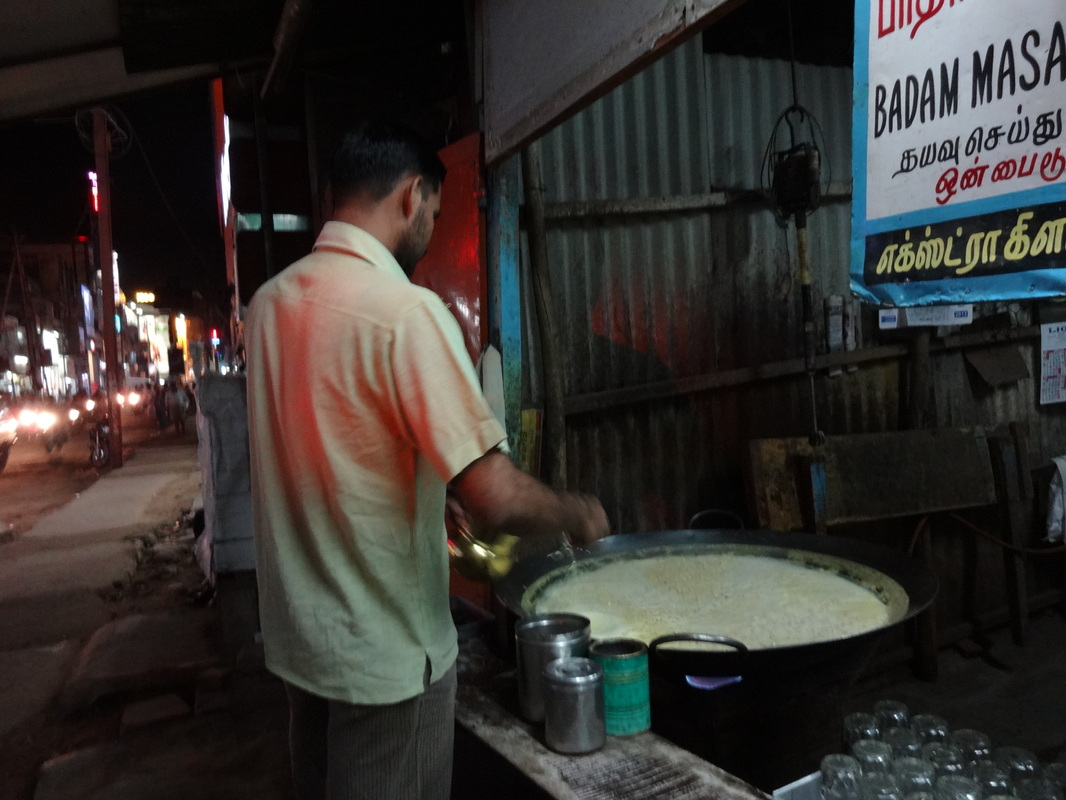
Vendor boils the master mix
|
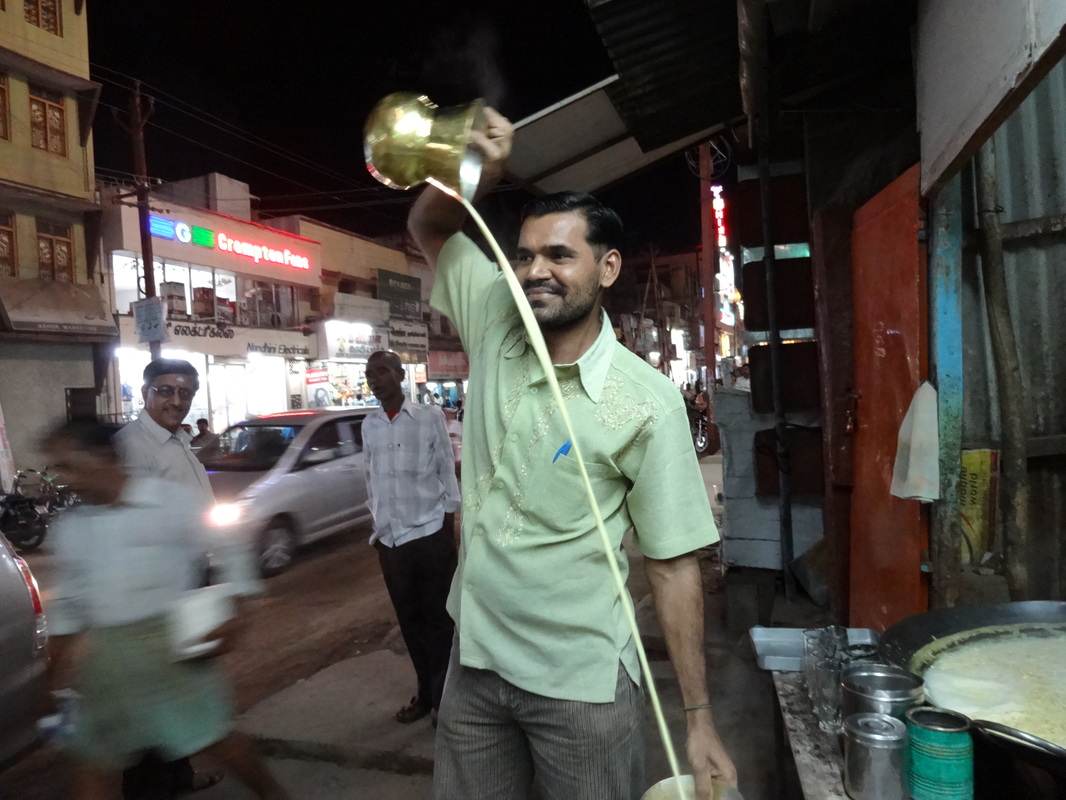
The magic!
|
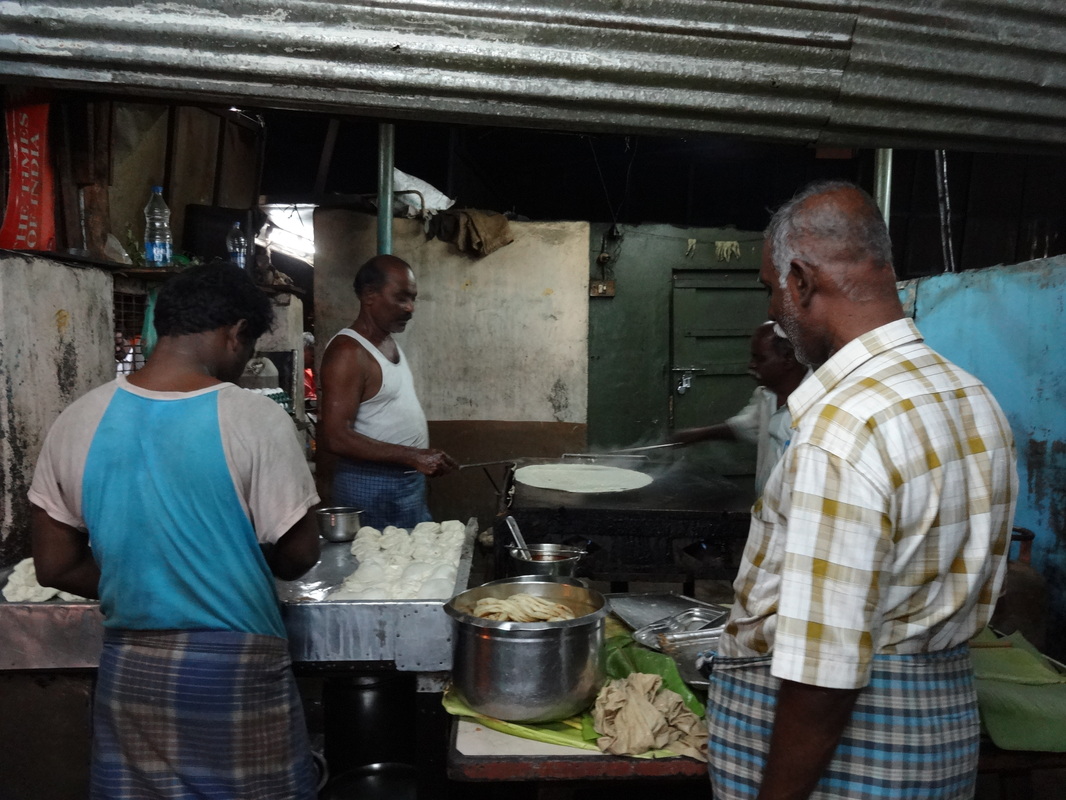
Paratha cafe
|
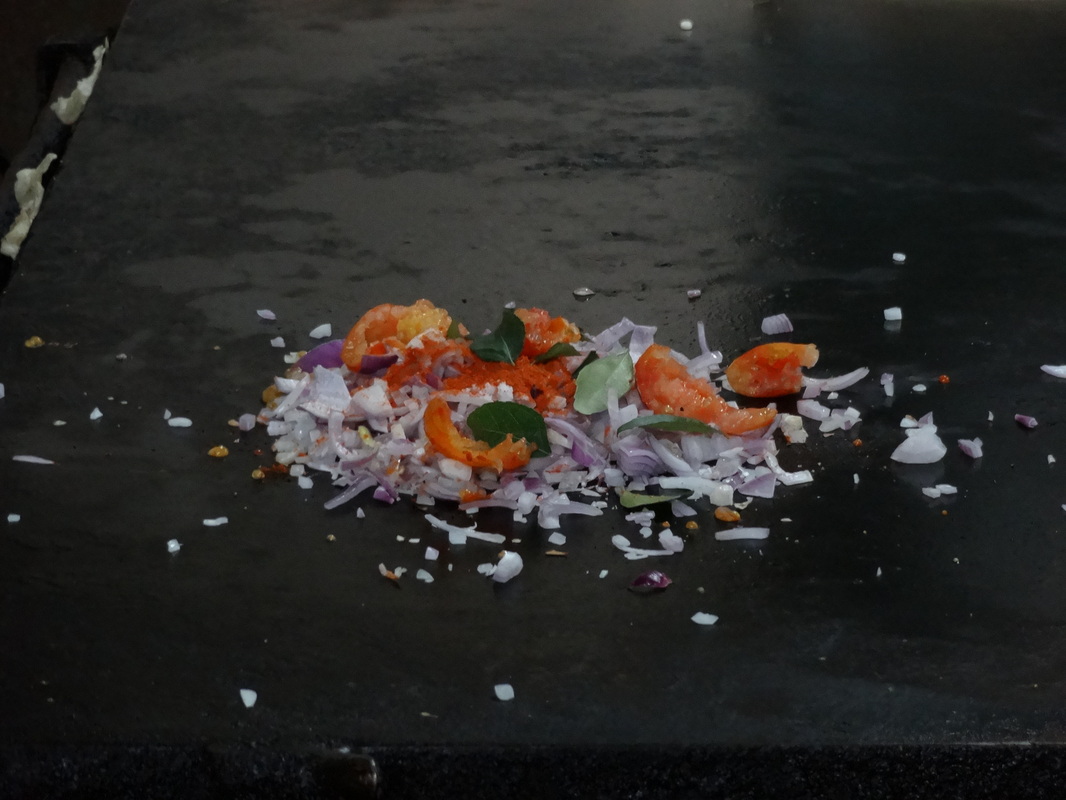
Start with veggies on the grill
|
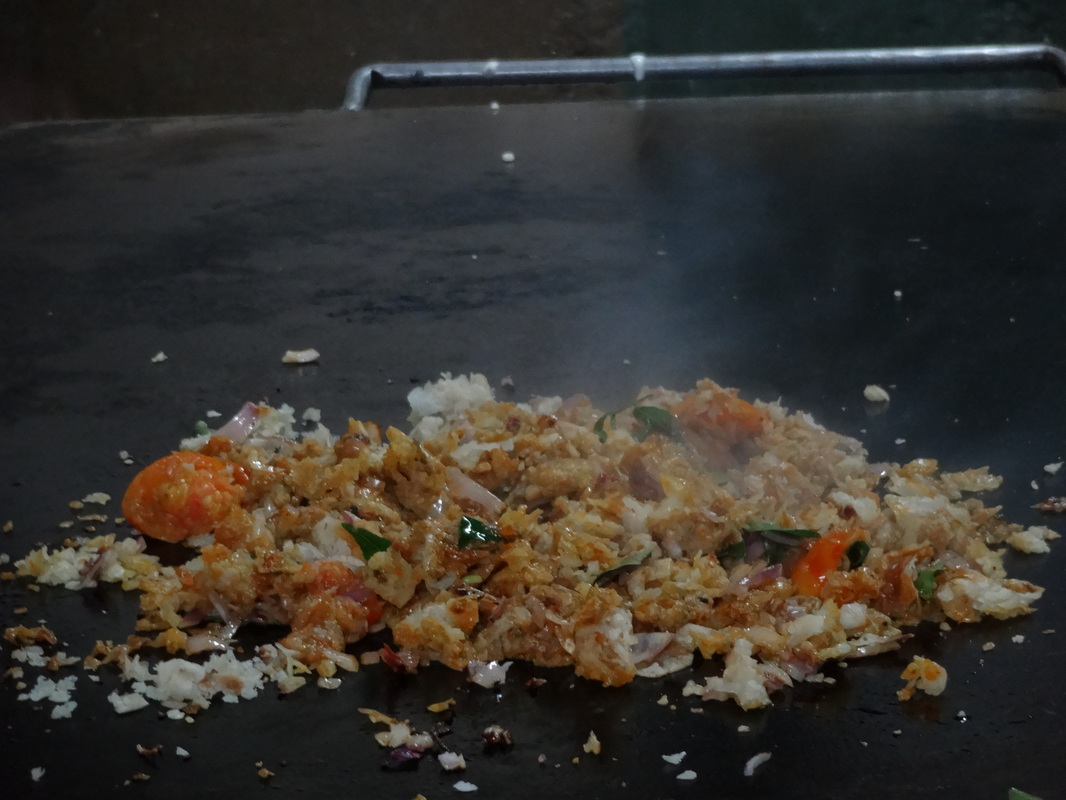
Chop in the cooked paratha
|
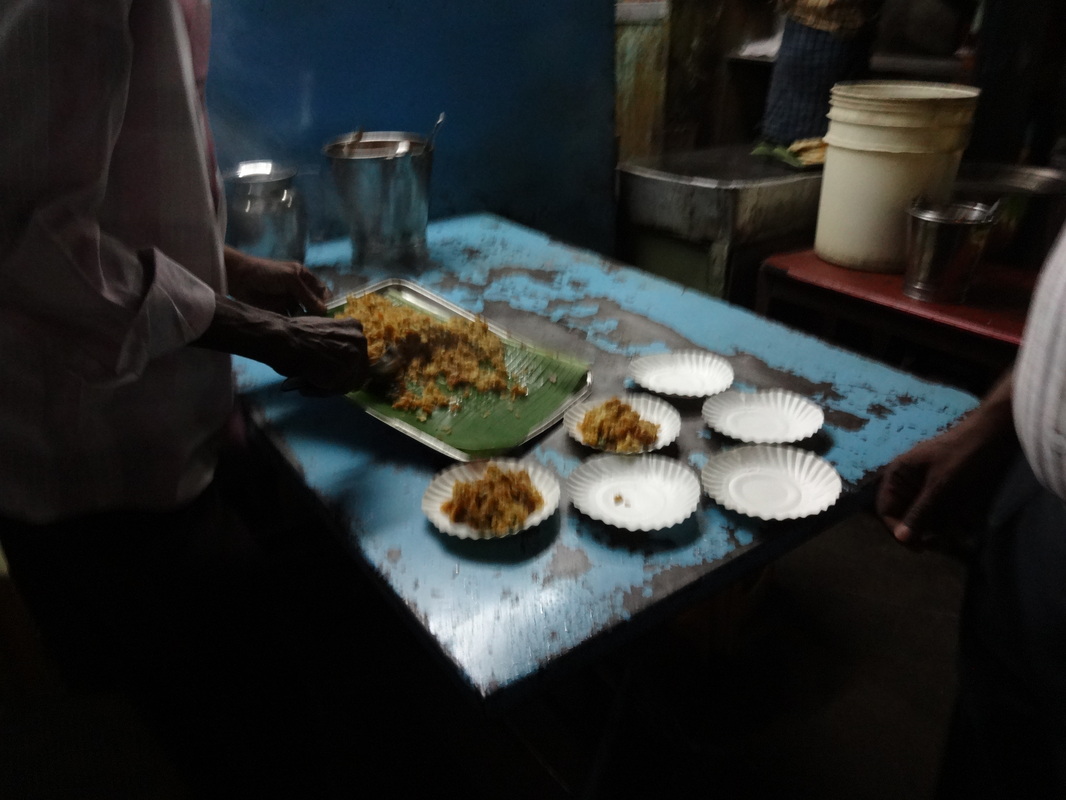
From a clean banana leaf to our paper plates.
|
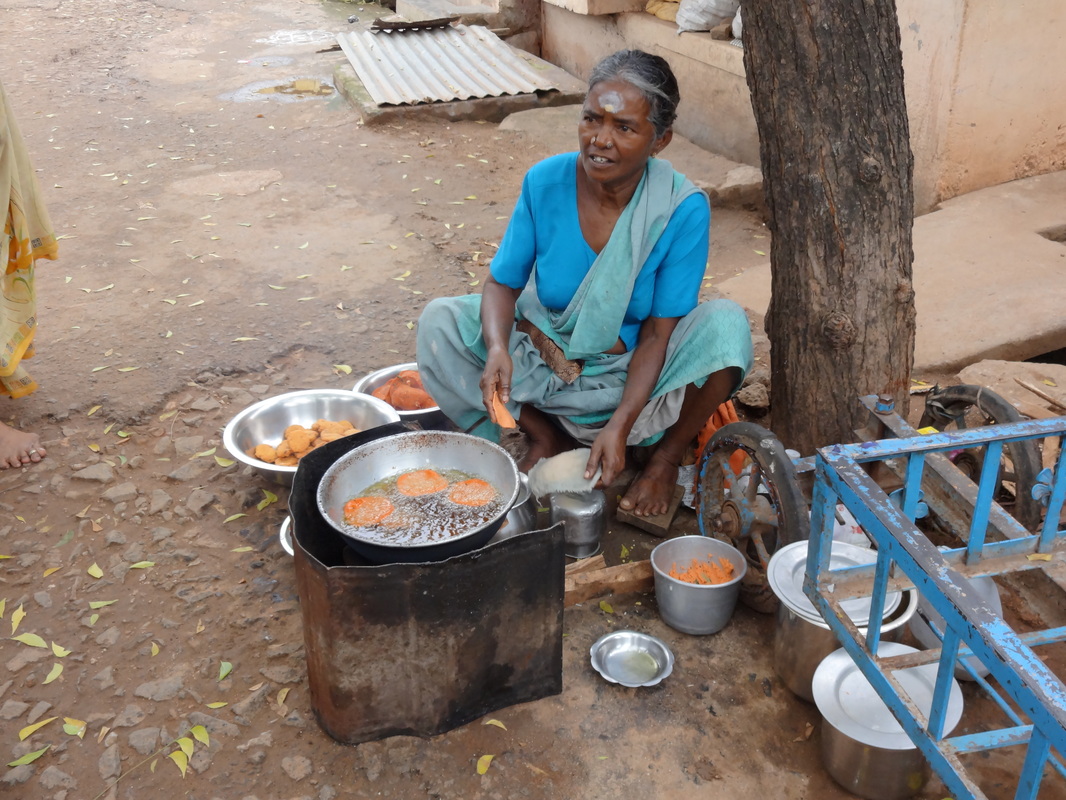
Vada from a village vendor. They were really good!
|
India is a country of great spirituality where people take their religious beliefs seriously and live them publicly. About 80% of the people are Hindu, 12-14% are Muslim, 5% or so are Christian and the rest are Buddhist, Jain, Sikh and a few Jews. Temples and mosques are everywhere. Hindus wear signs of devotion on their foreheads and days are punctuated by the call to prayer for Muslims broadcast over loudspeakers from nearby mosques.
One of the earliest forms of religion is represented by a temple we visited in Kerala. It was an outdoor temple. We took our shoes off at the gate and walked about 300 yards to the altar area. The path was lined with large ceramic horses, painted and in various stated of deterioration. The horses are gifts from worshipers. About 10 new horses are added every year and the most broken up are retired.
A focus of this temple is the five headed cobra and other mystical animal forms. The priest was welcoming and performed a small ceremony to give us the ashes for a blessing. Big festivals are held here and worship includes gifts of alcohol and tobacco to the deities. This temple and this early form of Hindu belief is primarily found outside the cities.
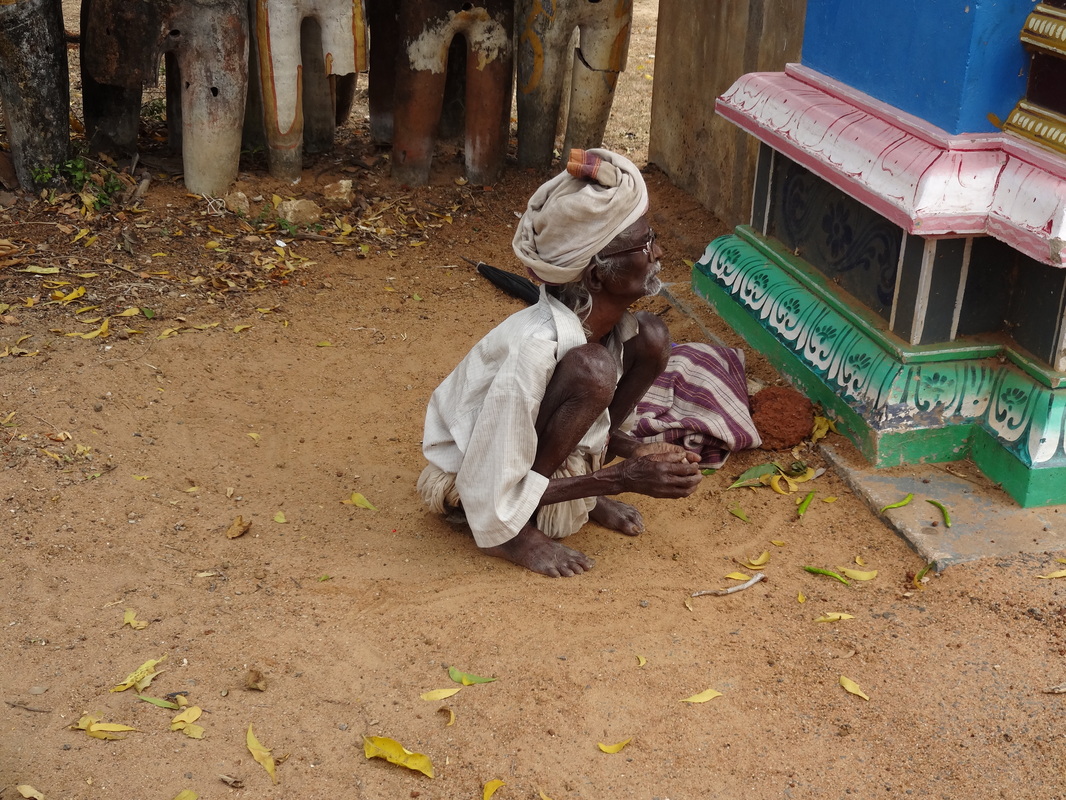
Priest at the entrance to the Cobra Temple
|
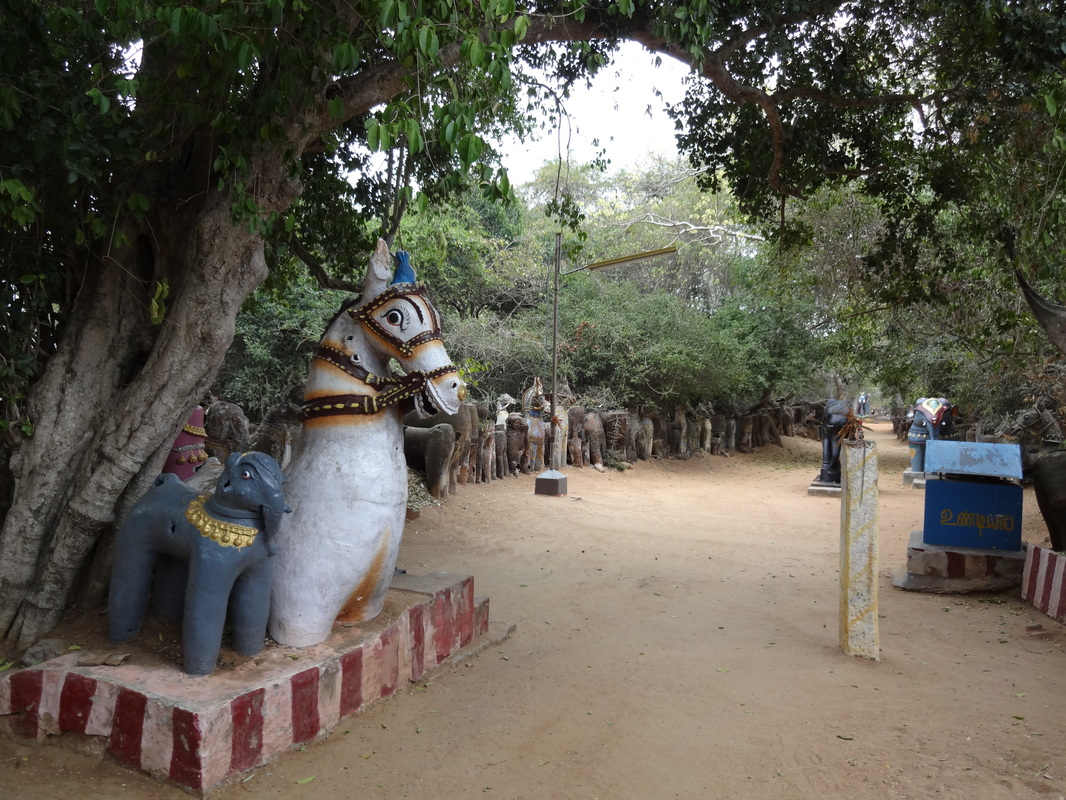
Walkway to the altar
|
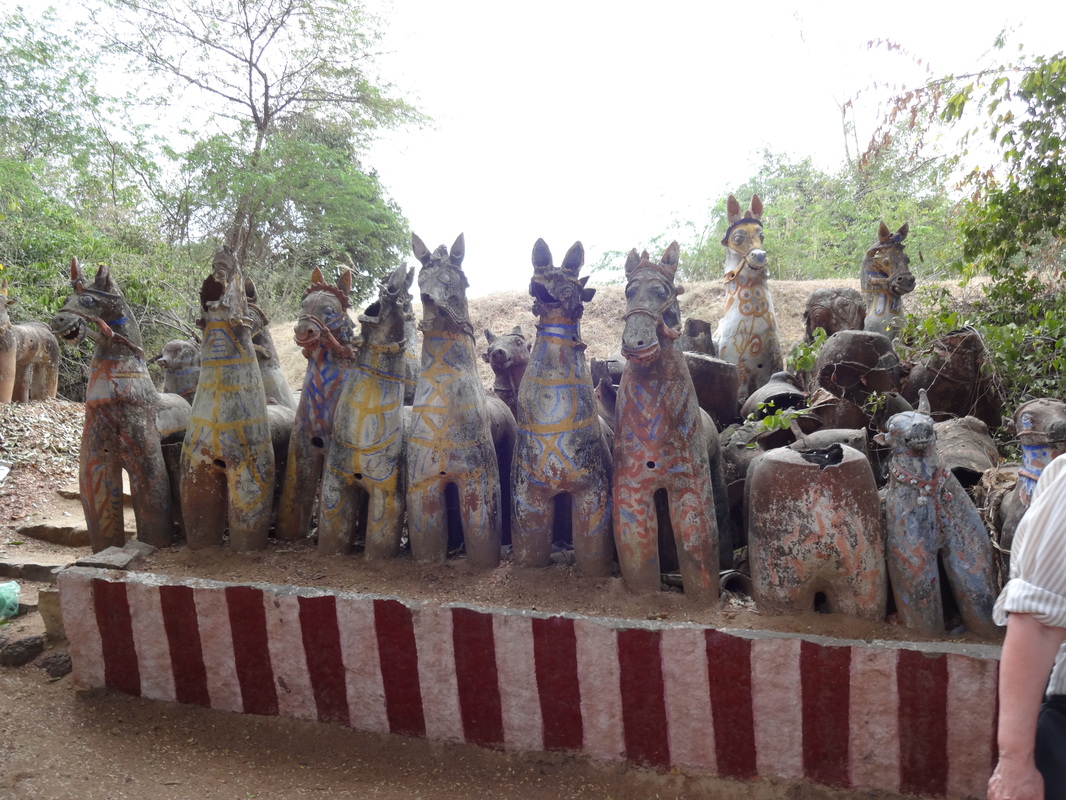
The horses that lined the path
|
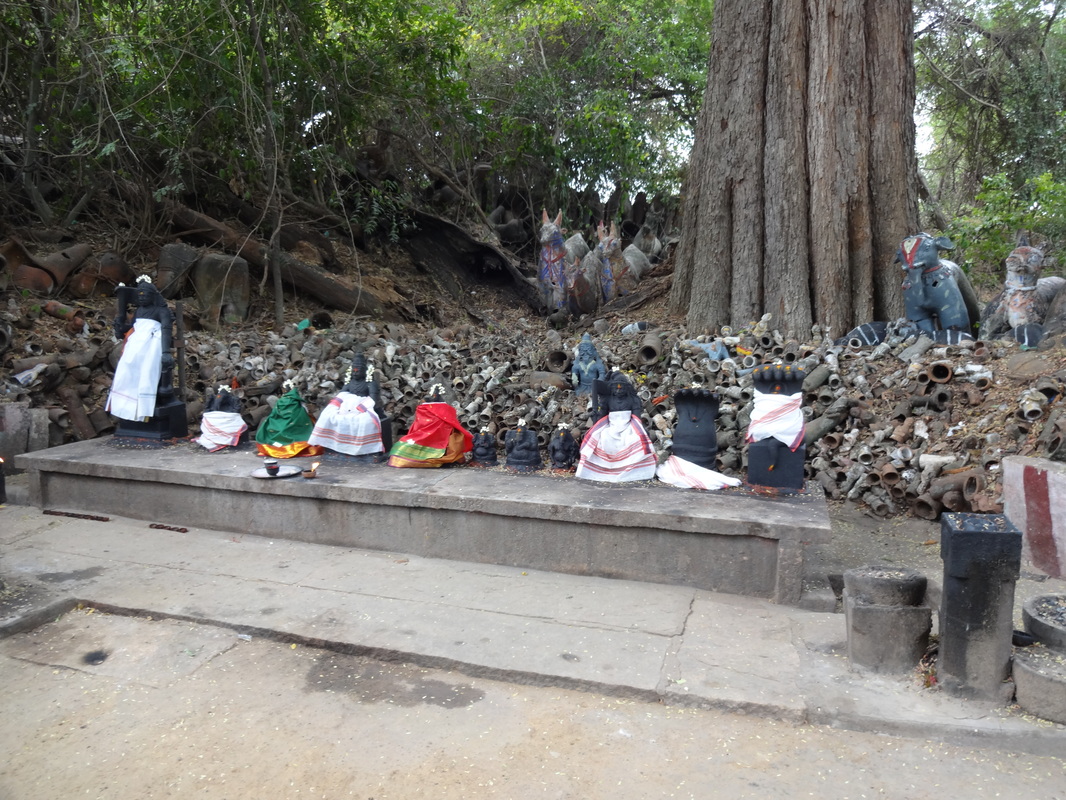
The altar
|
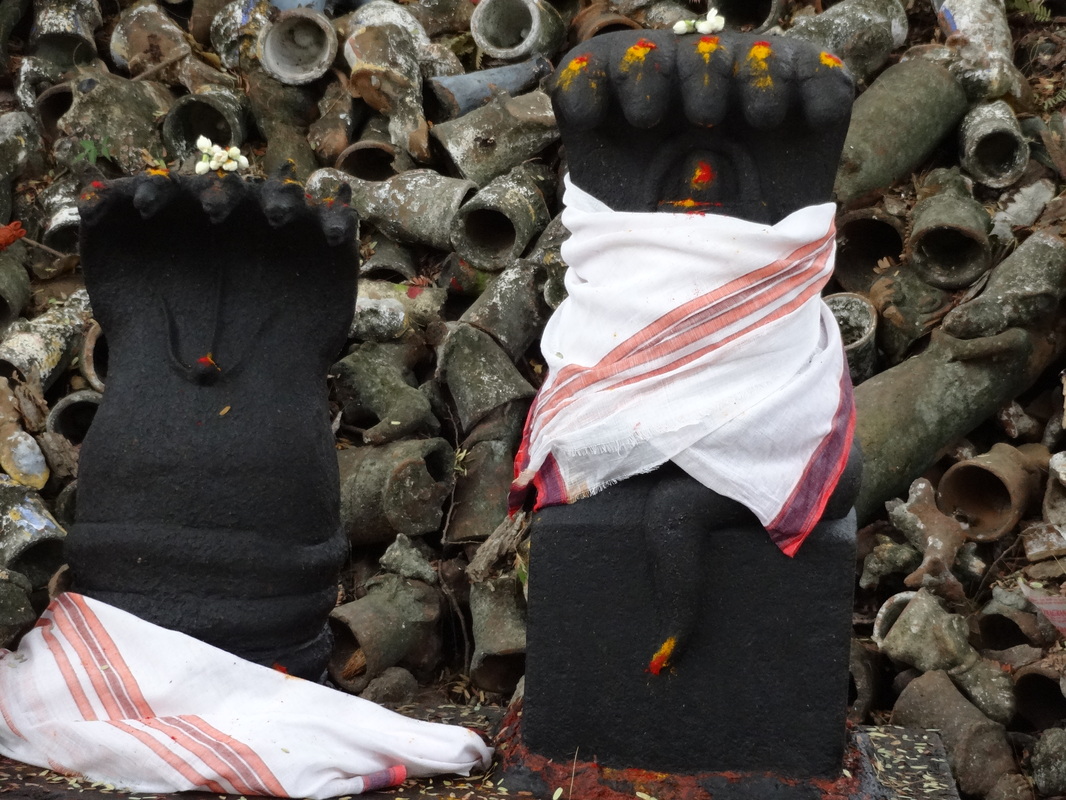
Five headed cobras
|
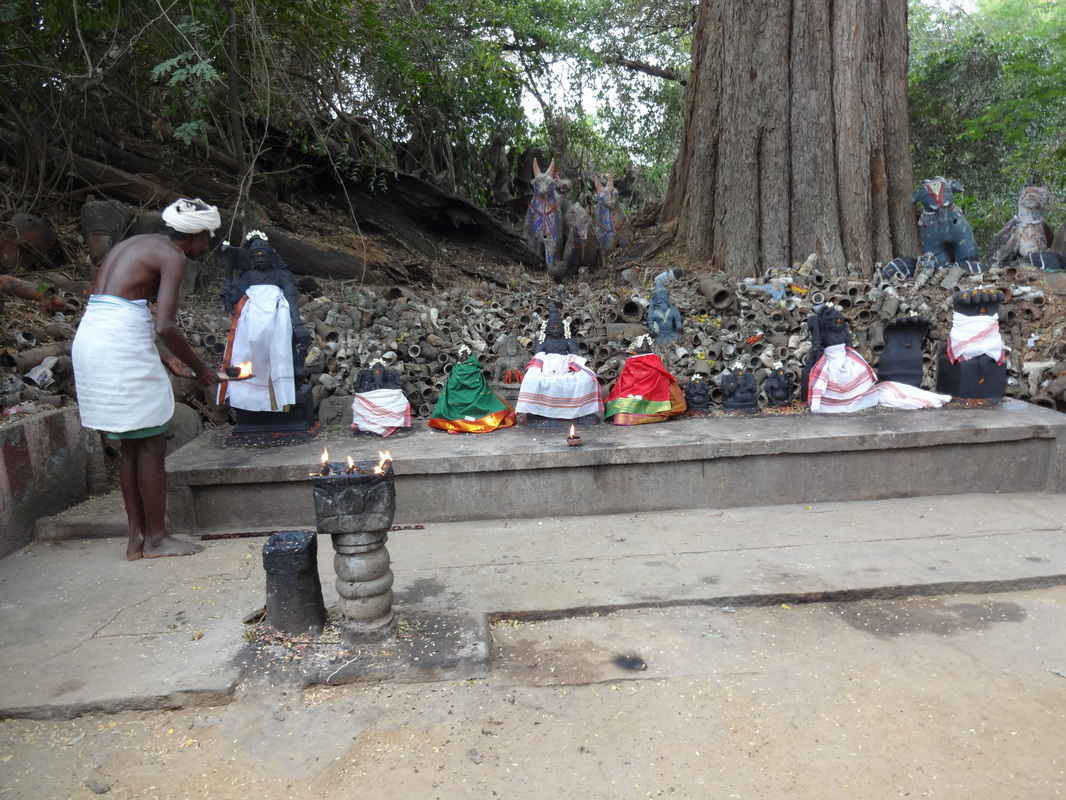
Priest conducting a worship ceremony.
|
Today is my last day in India. I fly from Mumbai to Delhi, Delhi to New York, New York to San Francisco and then to Oregon tomorrow evening.
It's been a wonderful trip, full of adventures. I have lots more about the trip to talk about here. I've saved the more complicated topics like religion and food for when I am at home with stronger wi fi and better technology so i can organize my thoughts and pictures better.
I've loved almost everything about the trip. I'll miss the people, the sounds, the colors, the food and the heat. I know I'll come back to India. I am already working on plans for my next trip or trips.
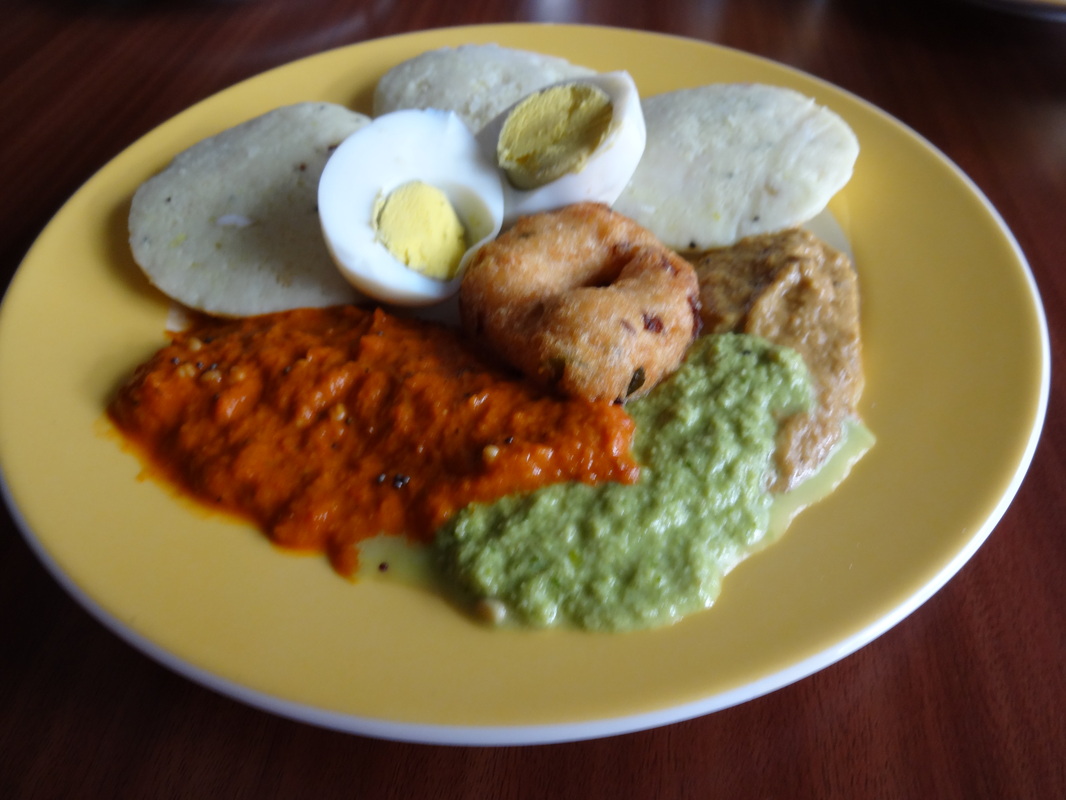
Breakfast with idly and vada with chutneys. I love this!
| |
The trashes is what our trip leader called the garbage that seriously litters much of the country. In India, all packaging used to be biodegradable banana leaves or paper mostly People would toss it into the street or a field and it would decompose or be eaten by the many hungry cows. Now that most packaging is plastic it still gets tossed but it doesn't decompose or get eaten. In some areas there has been progress but it's not widespread. The government has a work scheme for low income people and one of the jobs is trash clean up. Many people find the trash one of the most depressing parts of a trip to India. Our trip leader begged us to leave 'the trashes' behind and just take home our other wonderful memories of Incredible India.
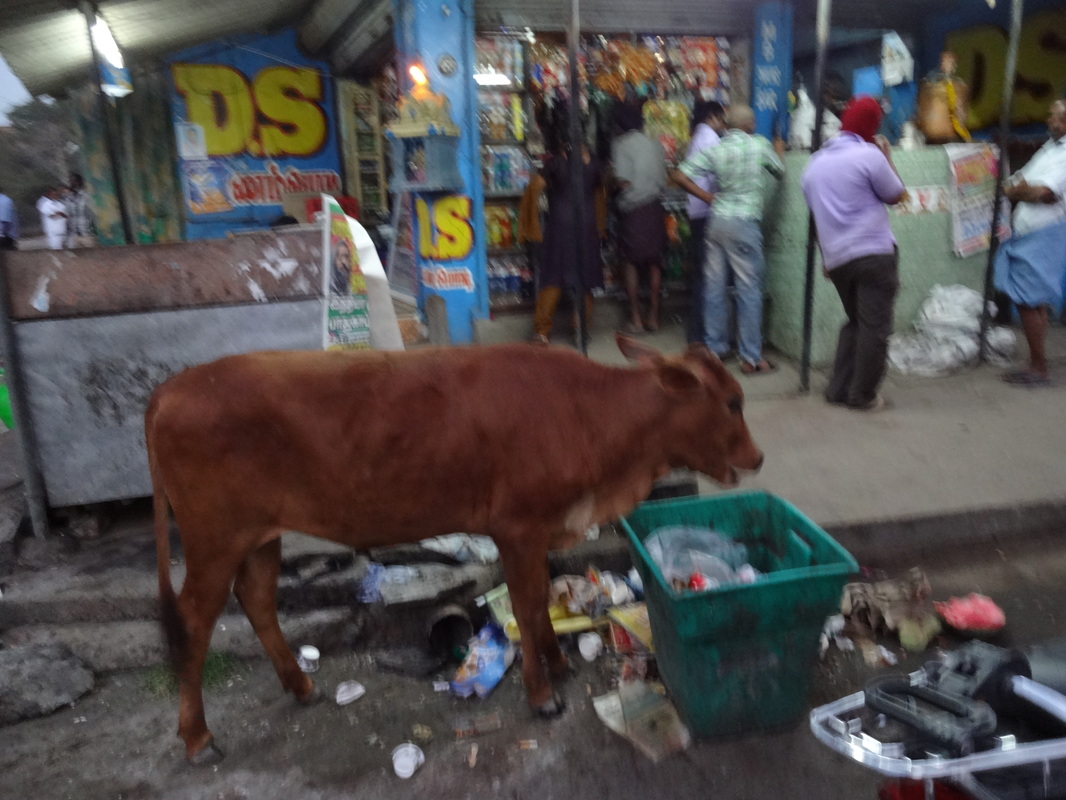
Some trash still gets eaten
|
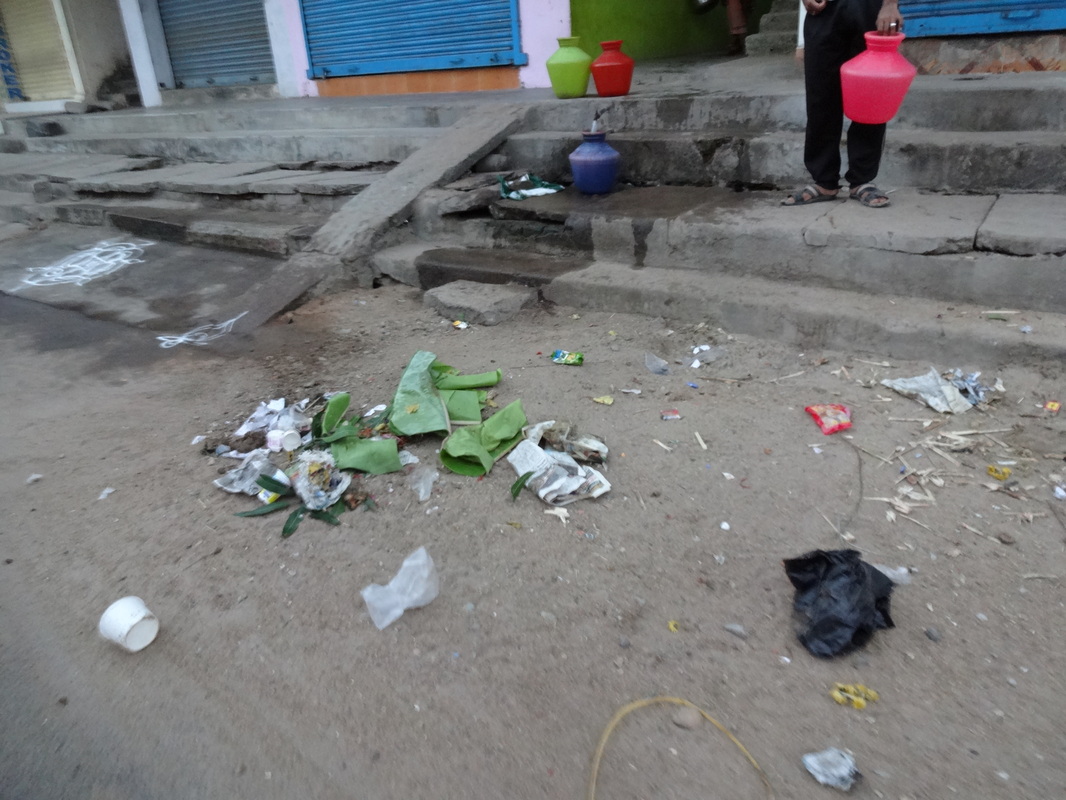
This garbage was tossed from an upstairs apartment as we walked through a village
|
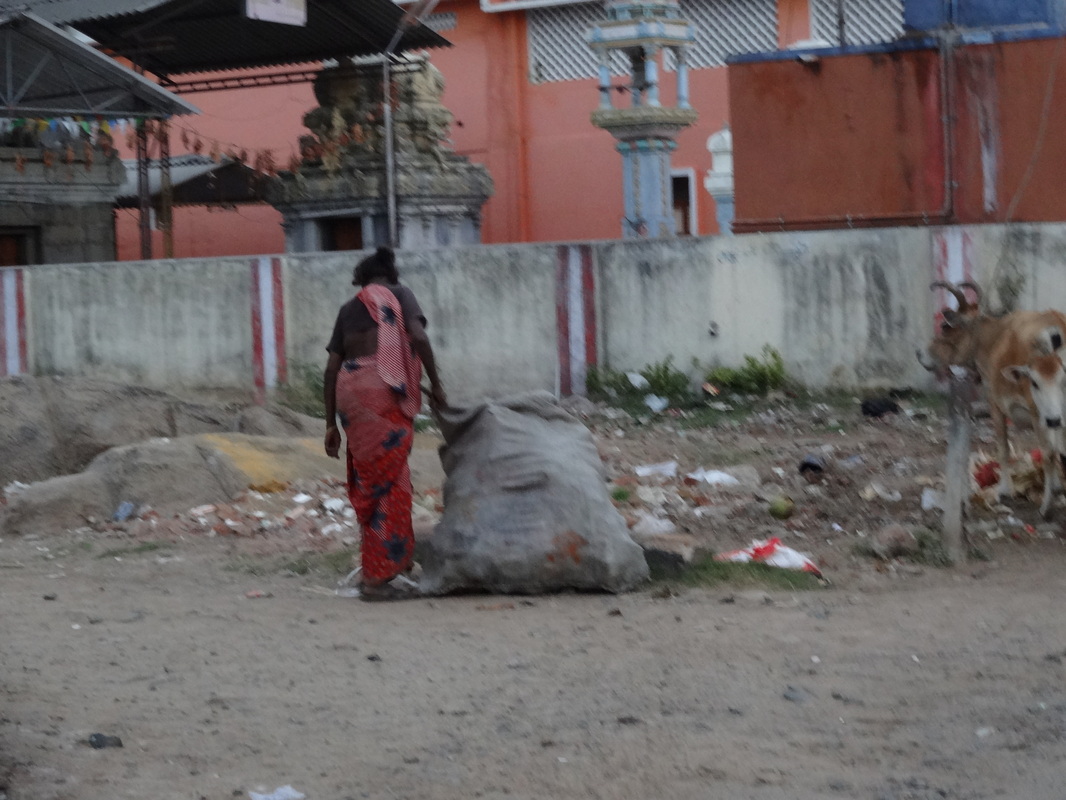
Work scheme employee gathering trash. she has lots to do!
|
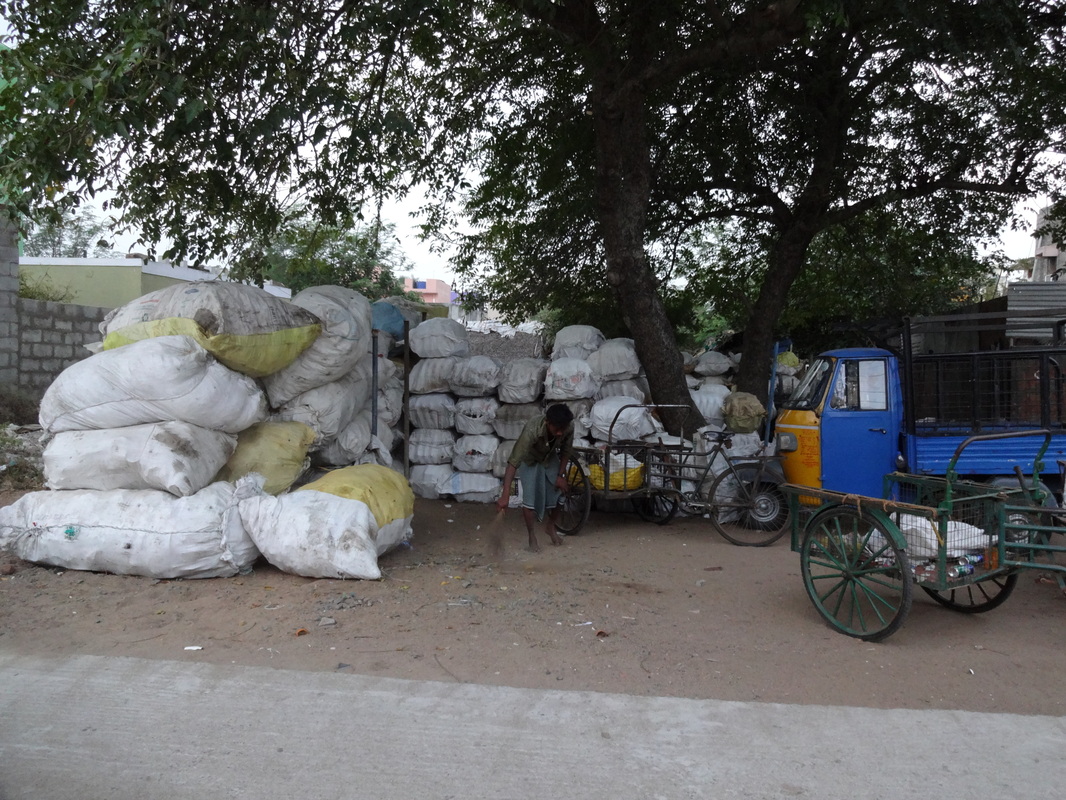
Recycling is private and a source of income for trash pickers and buyers/sellers.
|
Growing old in India can be wonderful or not. Indian families take care of their elders. Nursing homes are very uncommon. Sons have responsibility for caring for elderly parents which means daughters in law do the real work of it. Basic medical care is provided through government clinics for free.There is no general Social security. Most people don't have pensions. There is no 'retirement age' and jobs are changing as for the man pictured below who drives a cycle rickshaw. They are not a main form of transport any more, being replace by tuk tuks (three wheeled taxis) and scooters. For elders with no viable family to care for them life can be grim. Several older men and women live in the orphanage our foundation supports. They are the lucky ones, they are not out on the streets.
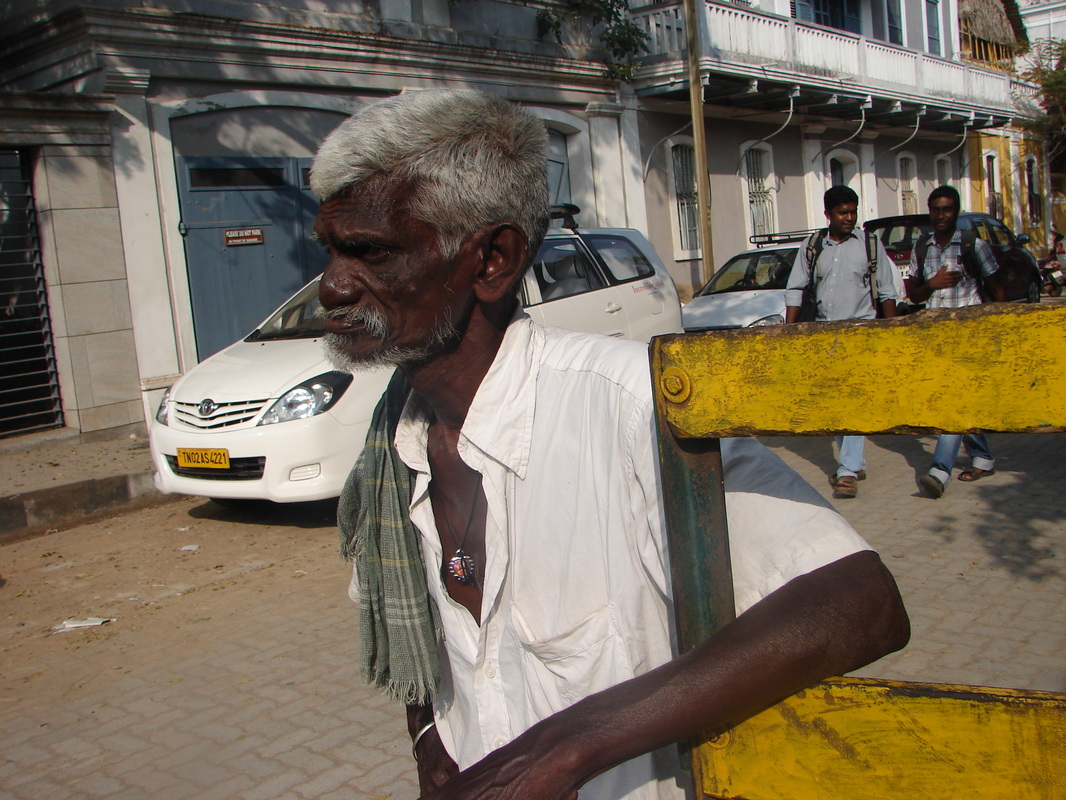
Cycle rickshaw driver in Pondicherry
|
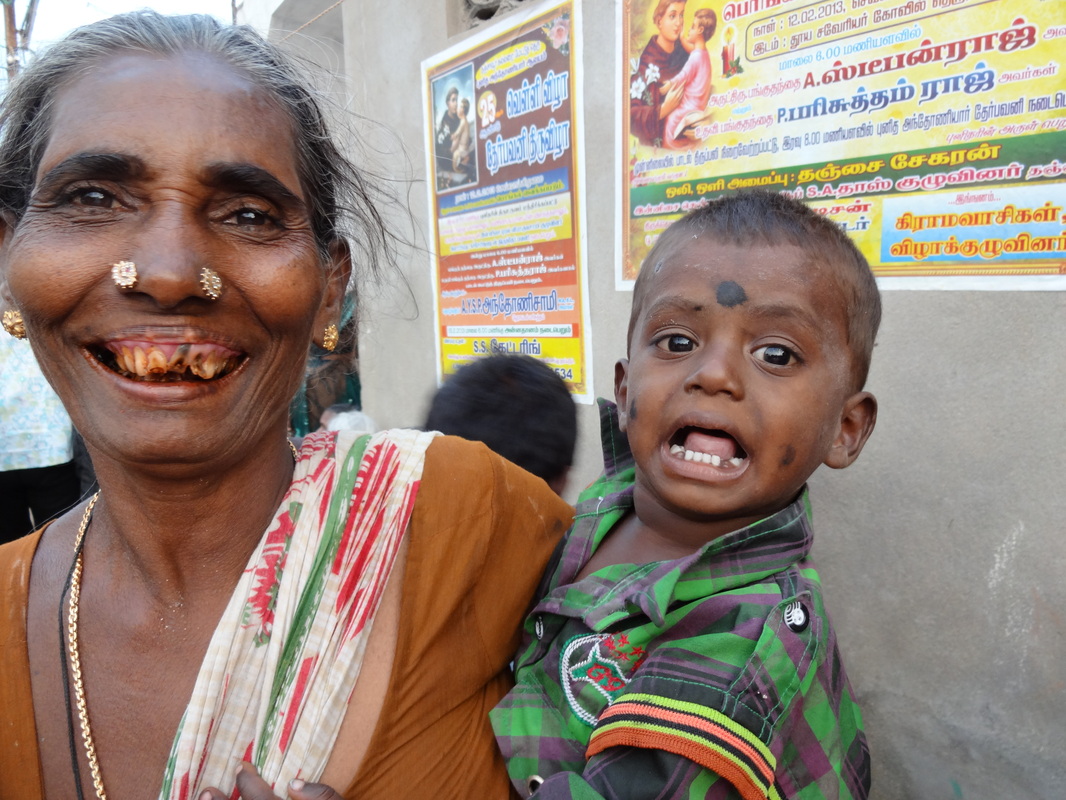
Happy grandma in the village
|
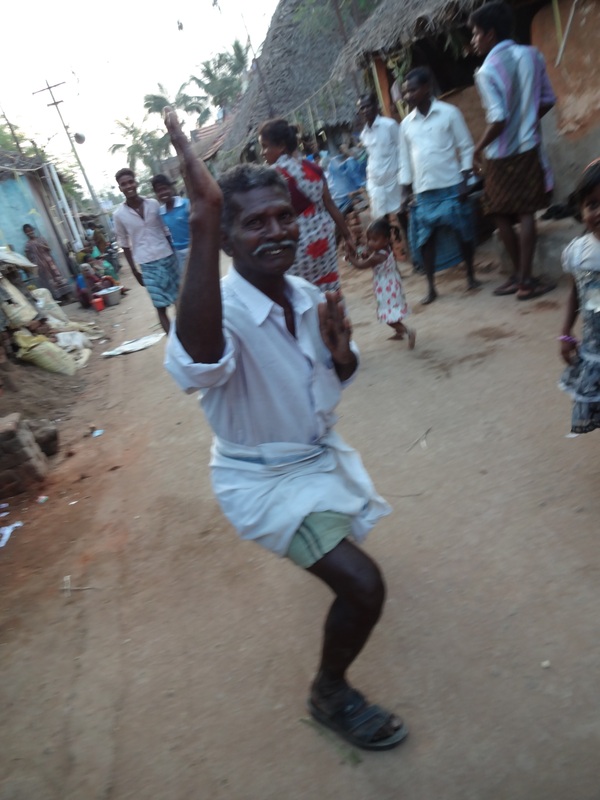
Old fellow in the village wanted to show me his moves!
|
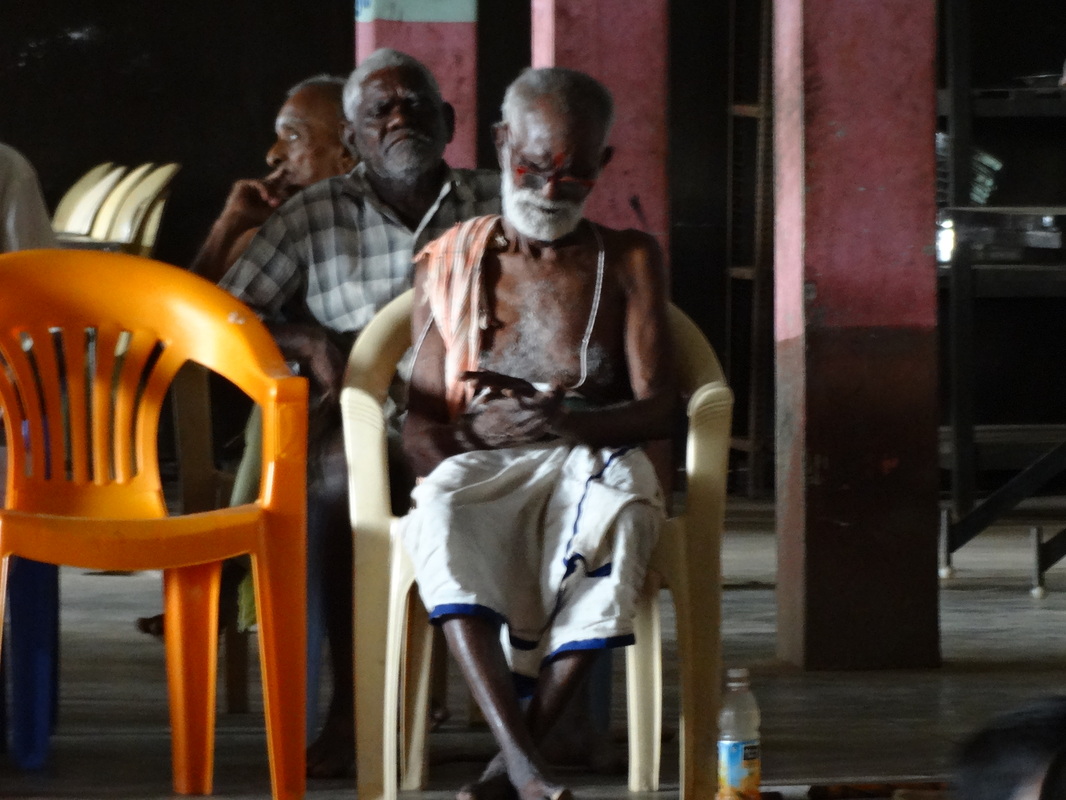
88 yo man at the orphanage. He loved the children's music.
|
Silk is everywhere in India. India is one of the world's largest silk producers. It has Asia's largest market for silkworm cocoons. Silk is used for beautiful garments; sarees, jackets. kurtas ,and household furnishings. It looks fragile but it is quite strong and takes dyes beautifully in the bright colors Indians love. We had an opportunity to visit a shop where silkworms lay their eggs and produce the cocoon that silk comes from. We also visited the huge government controlled cocoon market where producers and buyers meet every day but Sunday It is Asia's largest cocoon market and it a rue commodity market. It is crowded and intense. The government sets a minimum price but sellers always hope to get more. Producers from all over So India bring their cocoons here because they fetch the best prices.
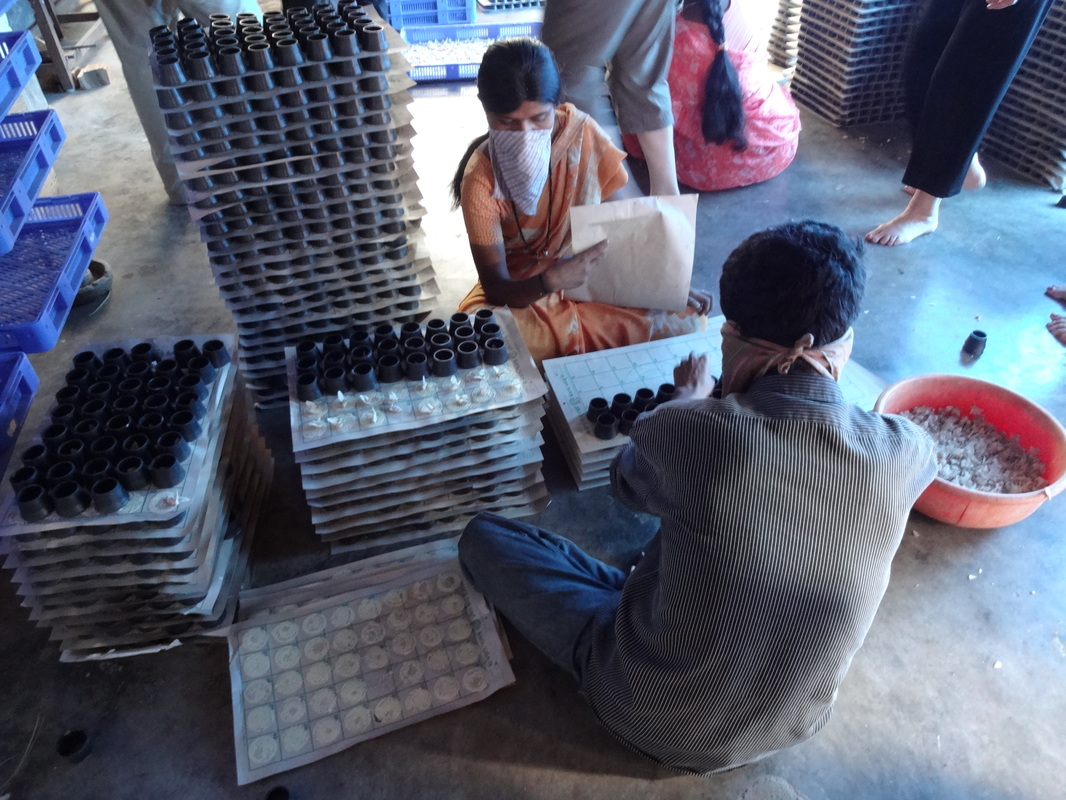
Female moths lay eggs in each small receptacle. the eggs are sticky and stick to the paper
|
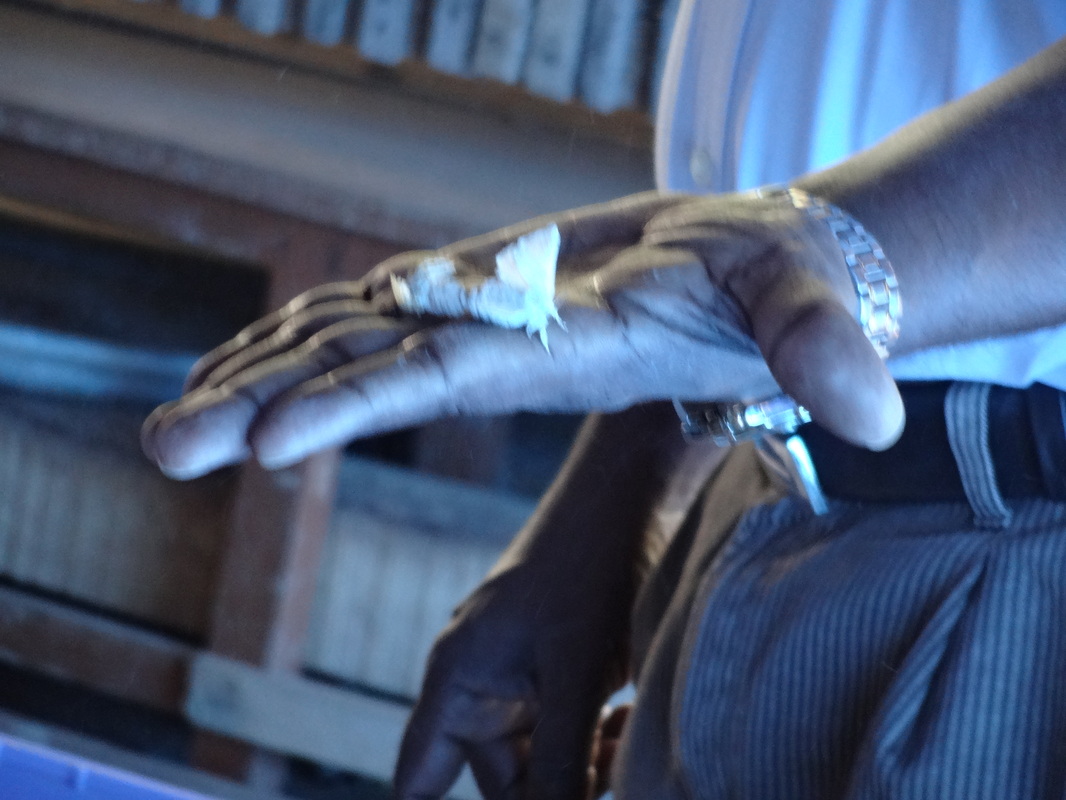
Silkworm moths mating.
|
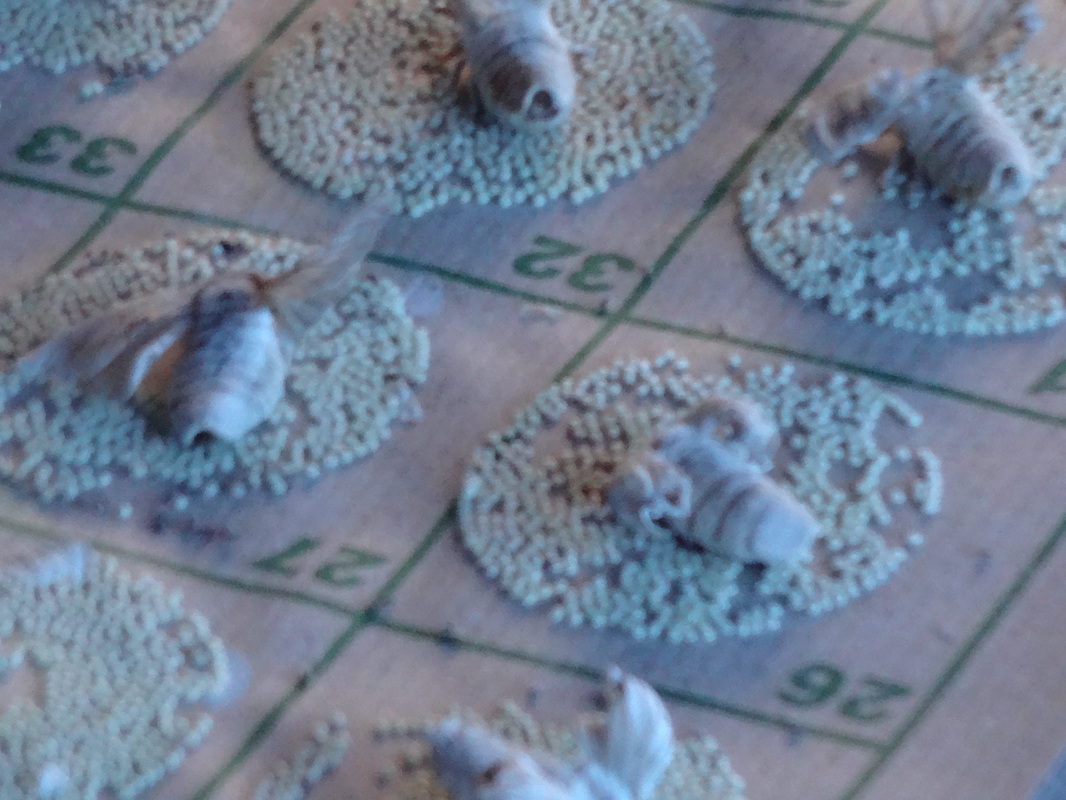
Female moths and their eggs.
|
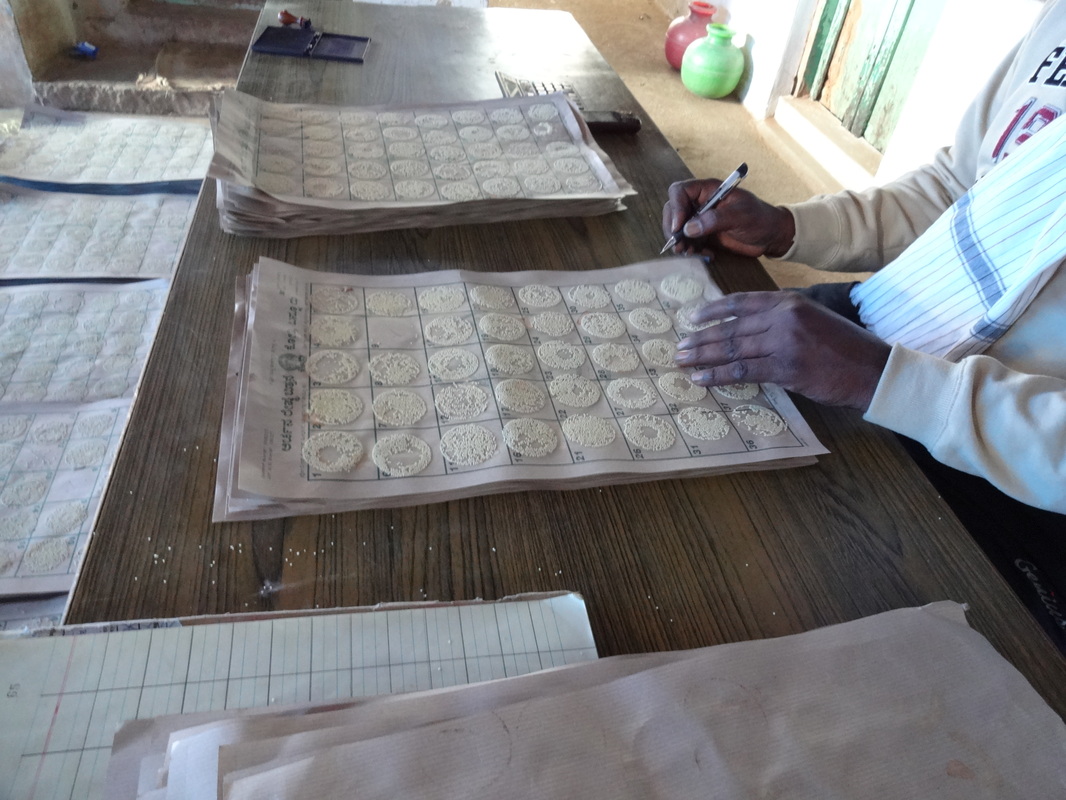
Sheets of eggs being graded ready for sale
|
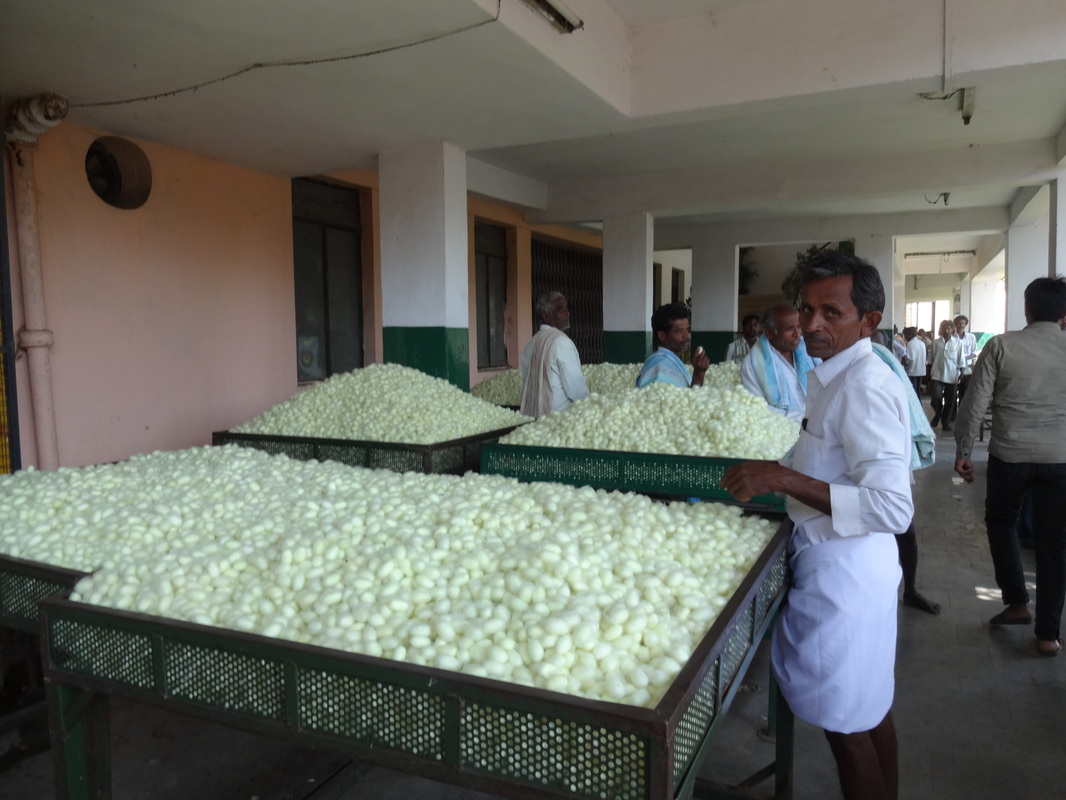
The cocoon market
|
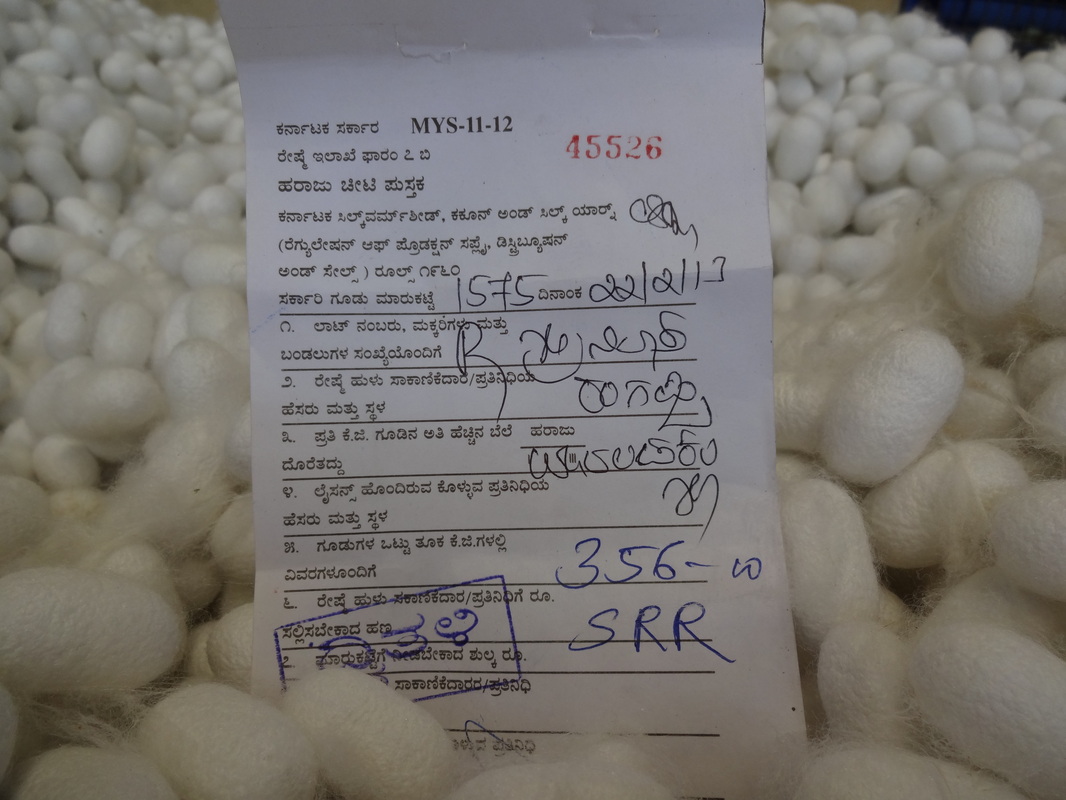
Registry bill with the minimum price for this lot
|
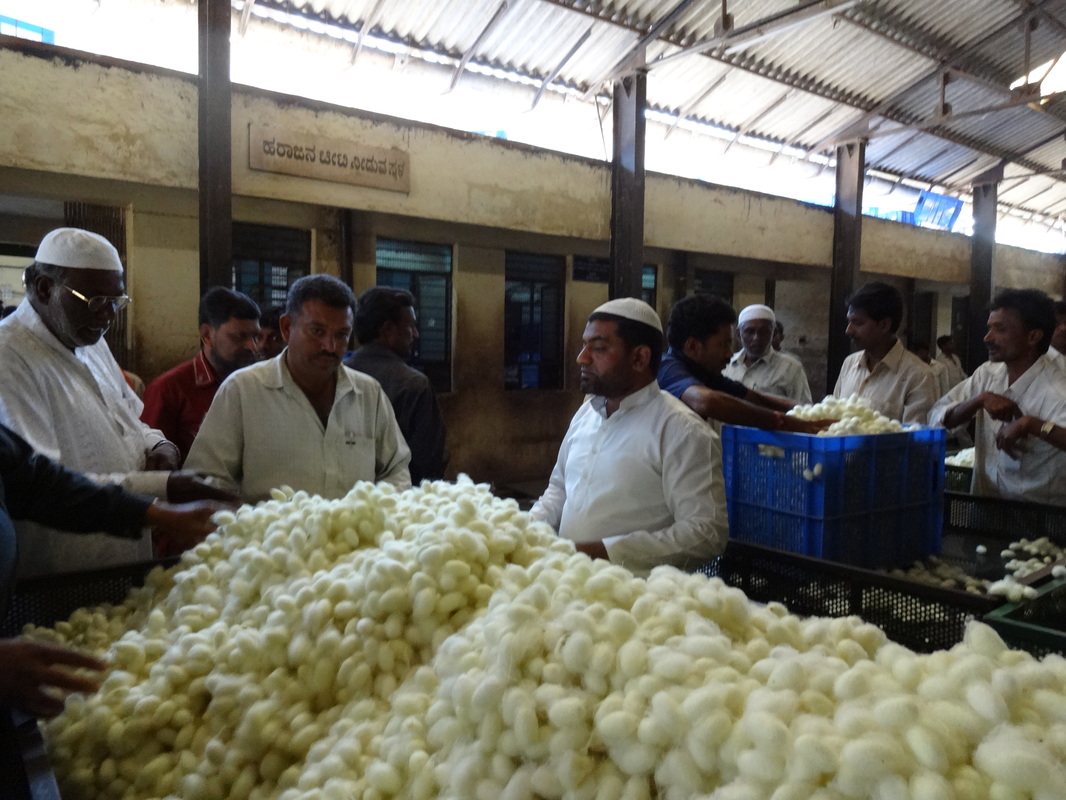
Market chaos
|
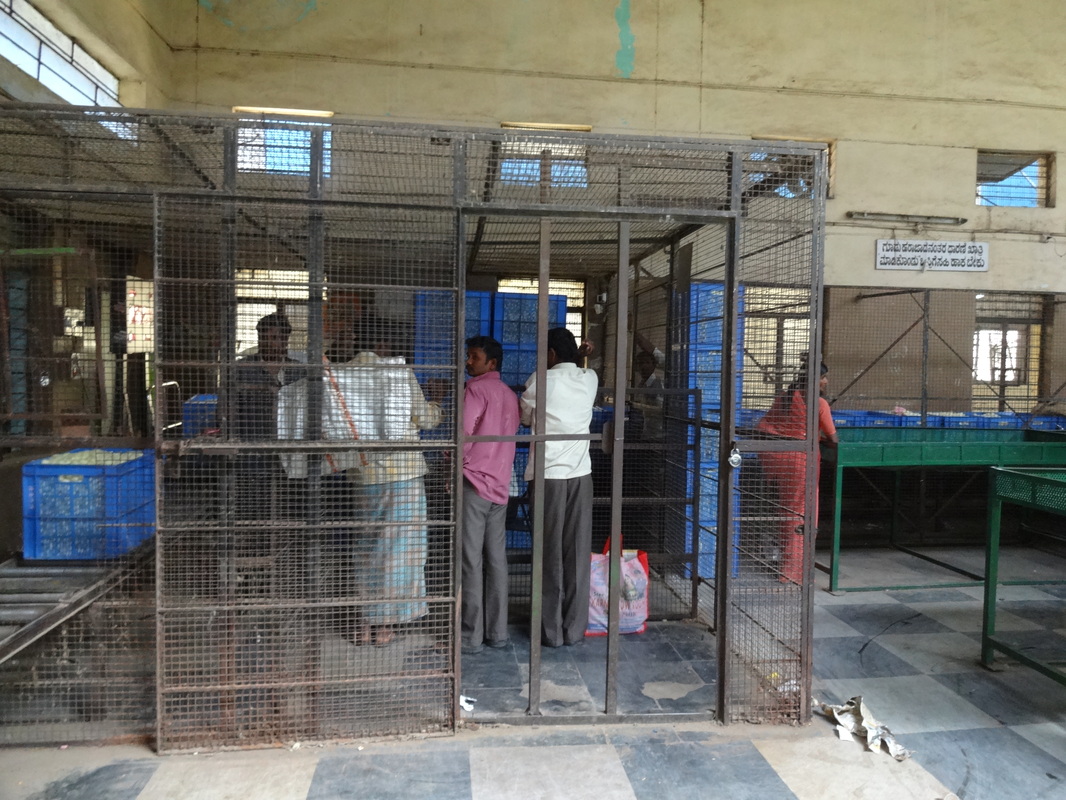
Where the money changes hands
|
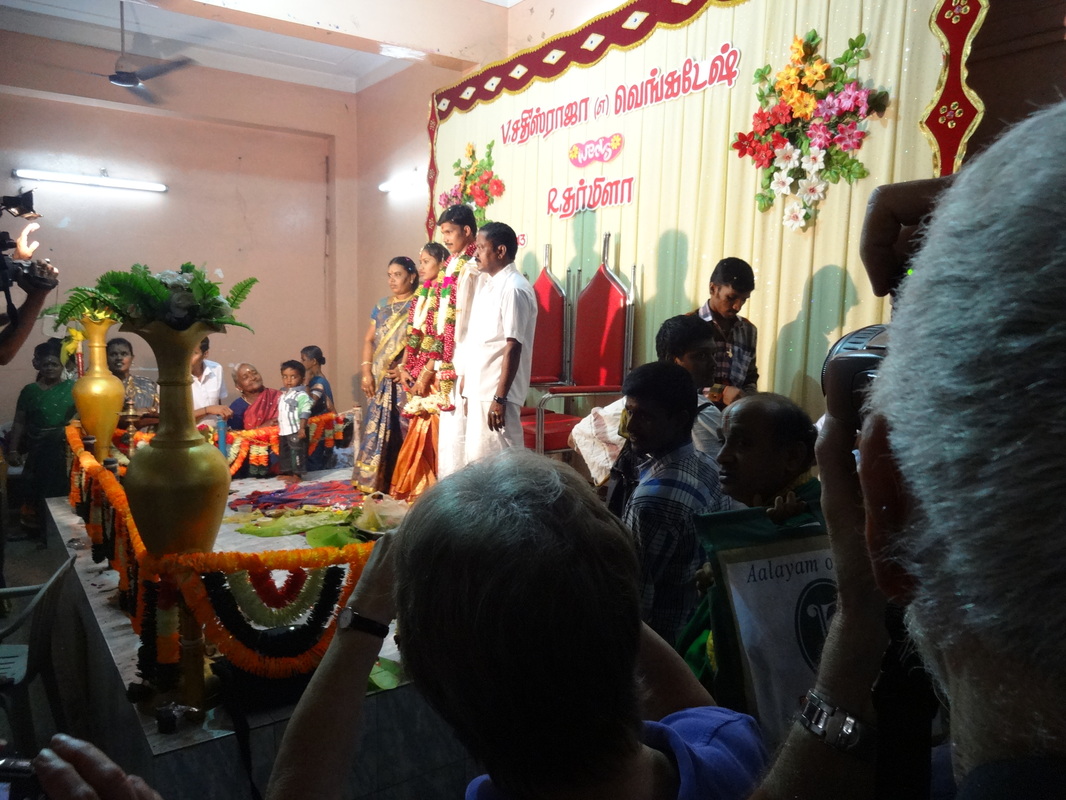
Wedding we participated in
|
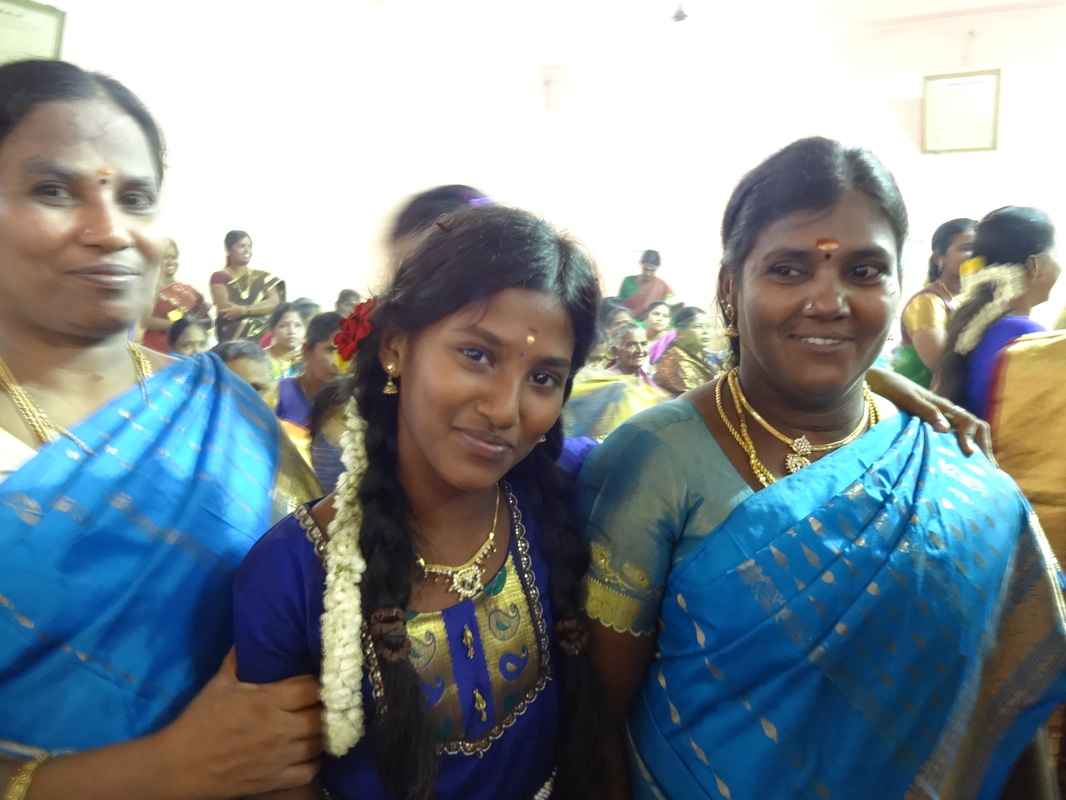
Happy wedding guests
|
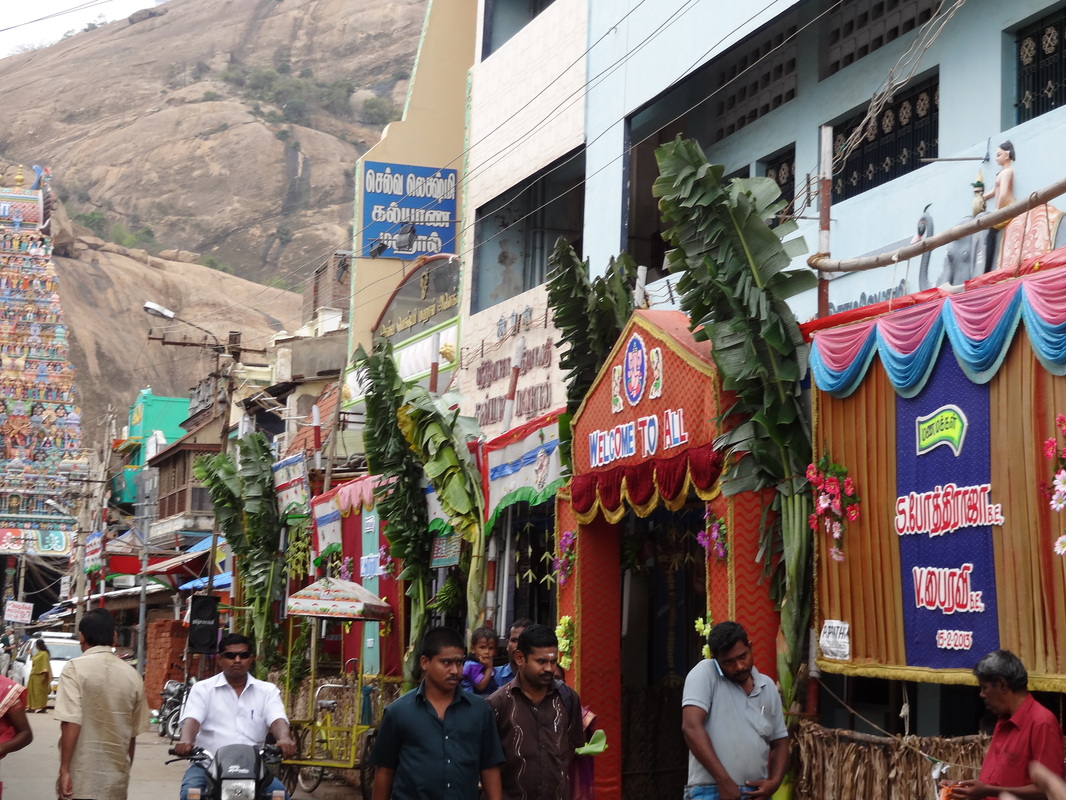
Bananna leaves indicate a wedding venue
| |
Indians love love and Indians love weddings. 80% of Indian Marriages are arranged. 20% are 'love marriages'.Arranged marriages have a 95% success rate. Love marriages last about 50% of the time, just like in the West.
Weddings are planned based in the horoscope. February is an auspicious month for weddings. When we visited the temple Sri Meenakshe we saw five weddings, took pictures and congratulated the brides and grooms. They were so happy to have us there and some actually teared up as we gave the Best Wishes.
We stopped at a small village with many wedding halls. We went inside one and became part of the event! we were brought on stage with the wedding couple and videotaped. I stood next to a strapping young man. I think he was the bride's brother, who took a shine to me. We were all invited to stay for the wedding breakfast. the young kept bobbing his head, plucking my sleeve and making the motions for eating. The mother of the bride came over and implored us to stay. We really couldn't so we dropped some rupee notes on the gift table, hopped on out bus and drove off.
Weddings in India are a sight to see, the brides are beautiful and the whole family is involved. The bride and groom may only have met a couple of times before the wedding. Mothers of the brides are fussing. these may be the most momentous occaisions of people's lives!
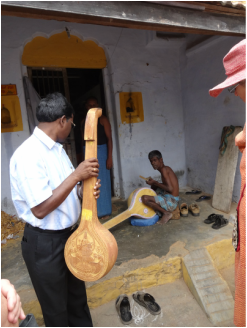
crafting traditional musical instruments
|
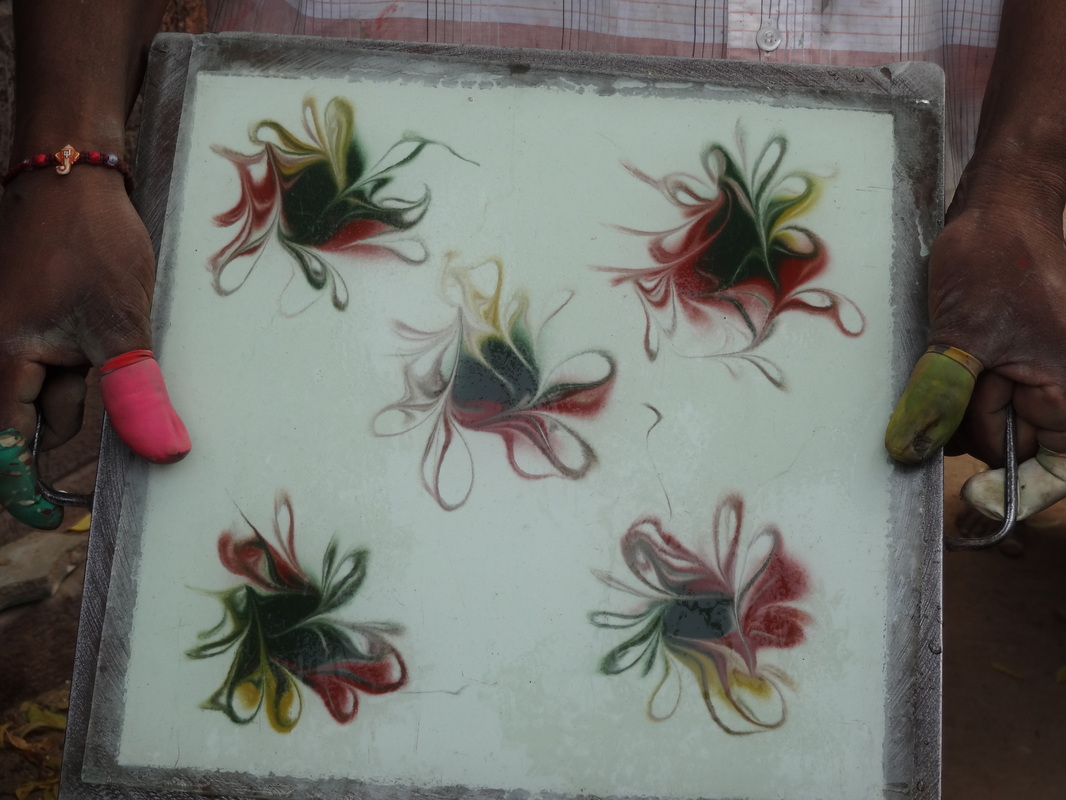
Hand made concrete tile
|
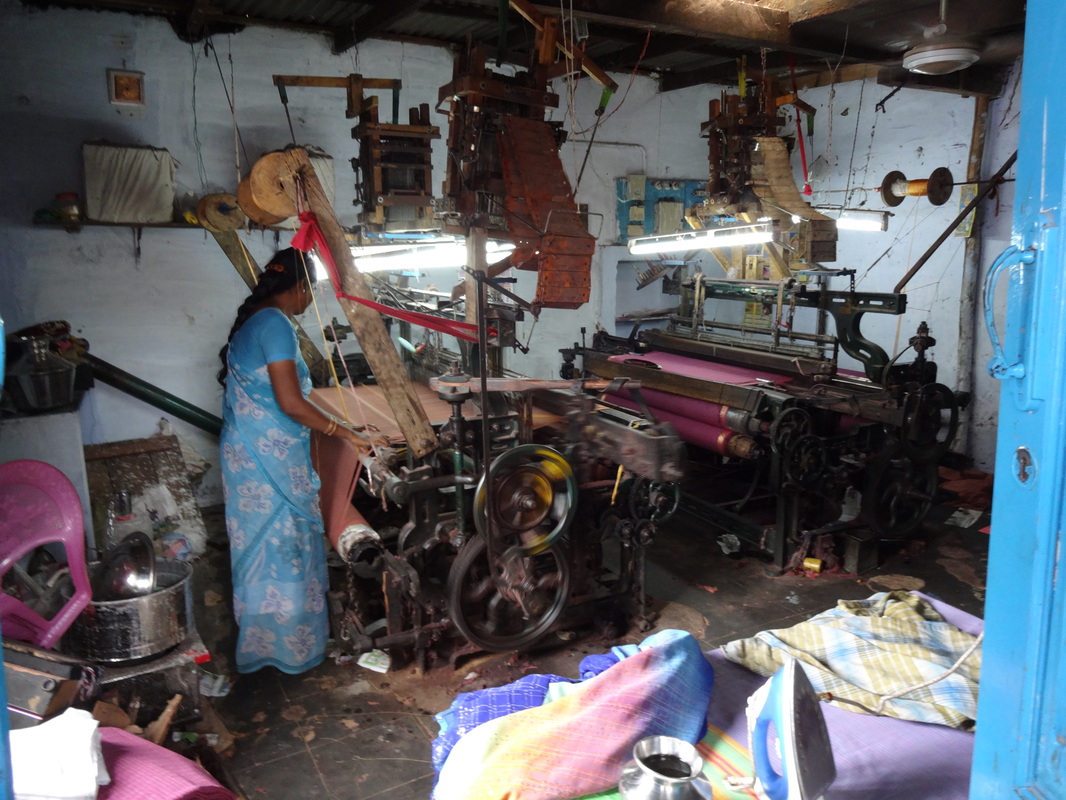
Weaving sari fabric
|
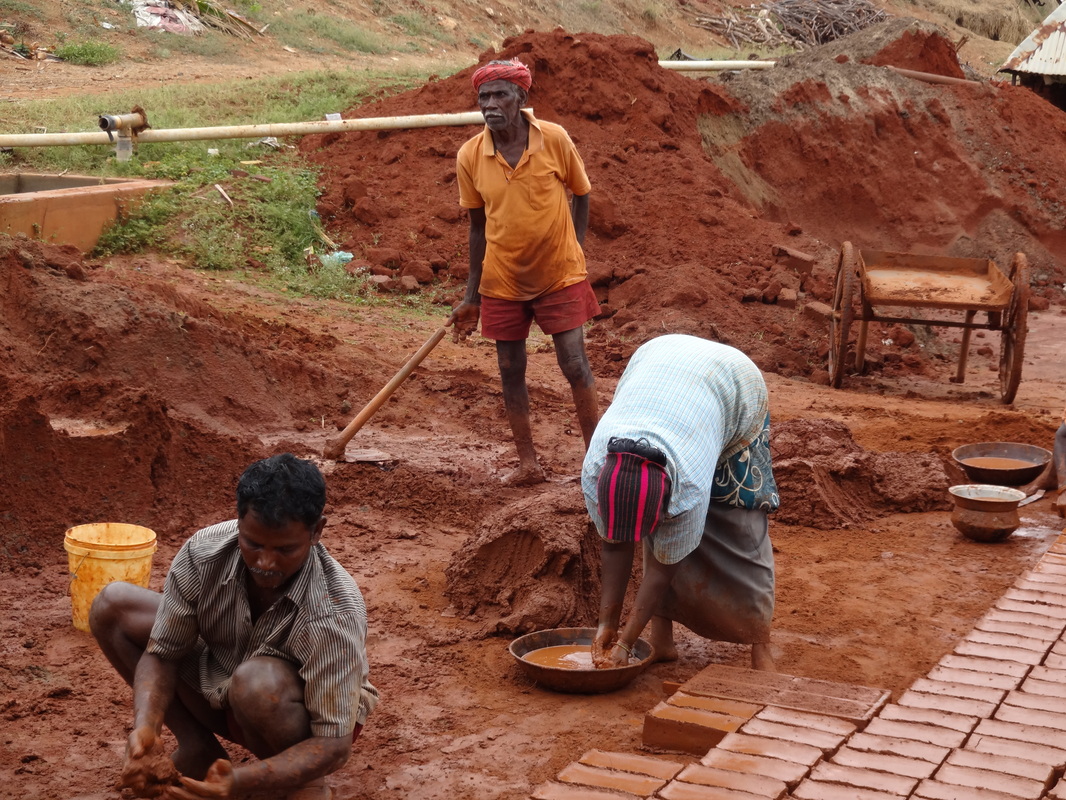
Handmaking bricks
|
As we drive through the countryside we often break up the bus trips by visiting local things of interest in the villages or just along the road. I've been fascinated by the cottage industries. They are usually family run and may employ a few extra people. Some are real artists like the brothers who handcraft wooden instruments and the family that make beautiful concrete floor tile. Others are more for the mass market like the cloth weavers. The cloth is cotton and is for everyday saris. It takes 5 yards to make a sari and that sells for about $8. The bricklayer family makes hundreds of bricks a day.
There is so much more to this country than the technology revolution we hear about. Some of this dates back centuries. The looms the weavers use are electric but are so old that parts are hard to find.
It's wonderful what you can find when you get off the beaten path and into the villages where the action is!
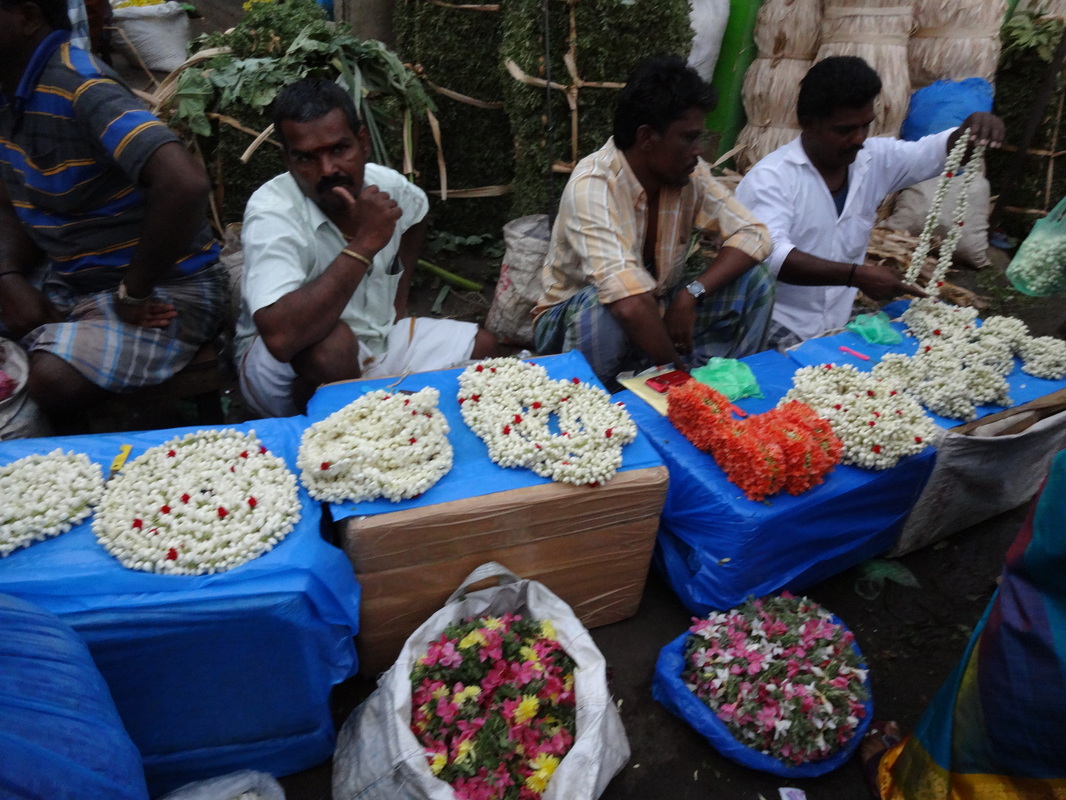
Flower Market in Madurai
|
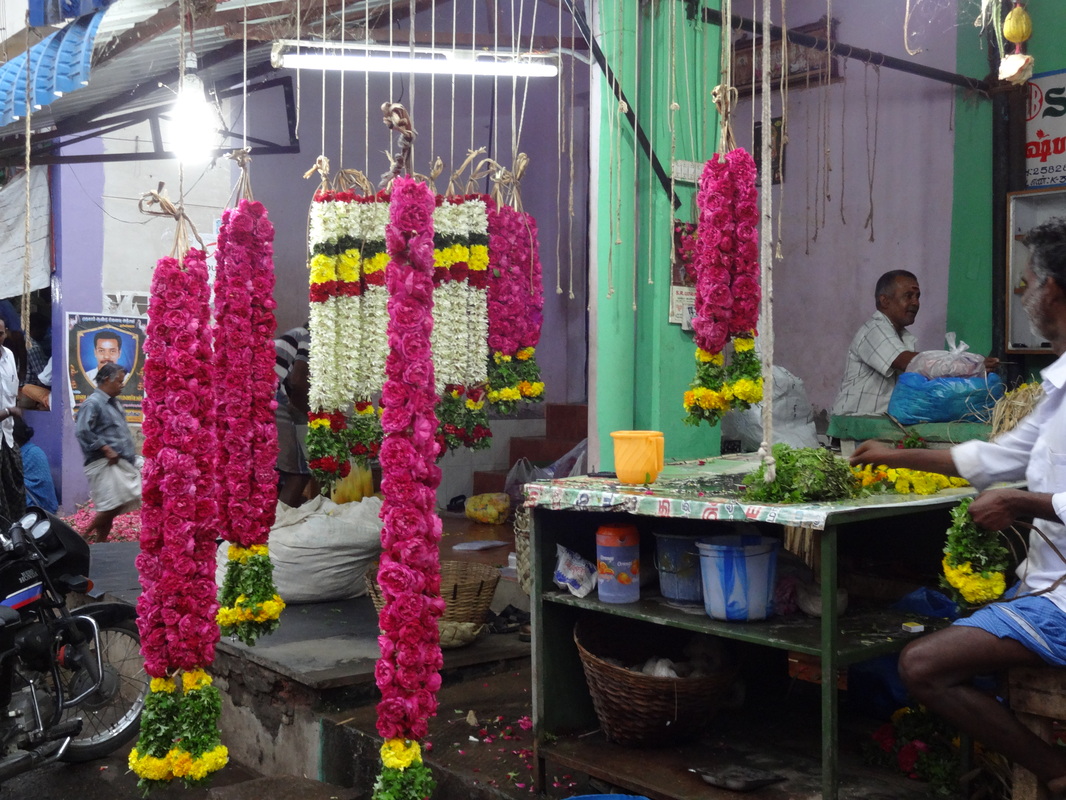
Temple flowers
|
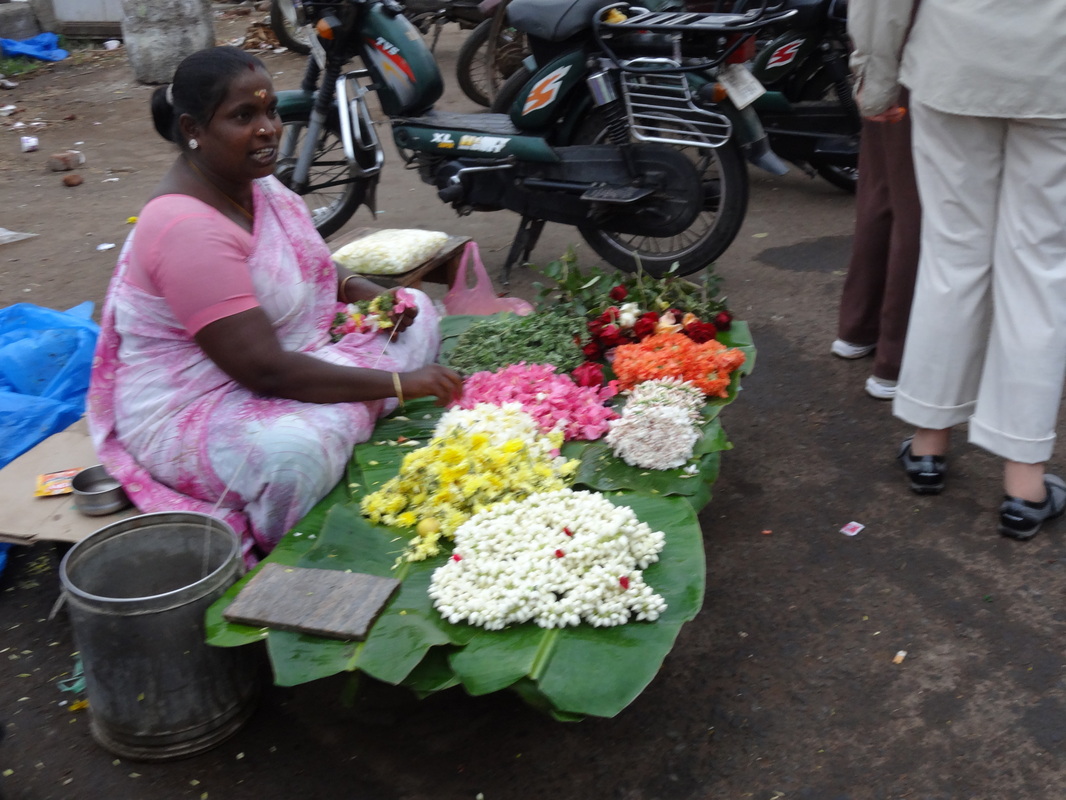
Flower market in madurai
|
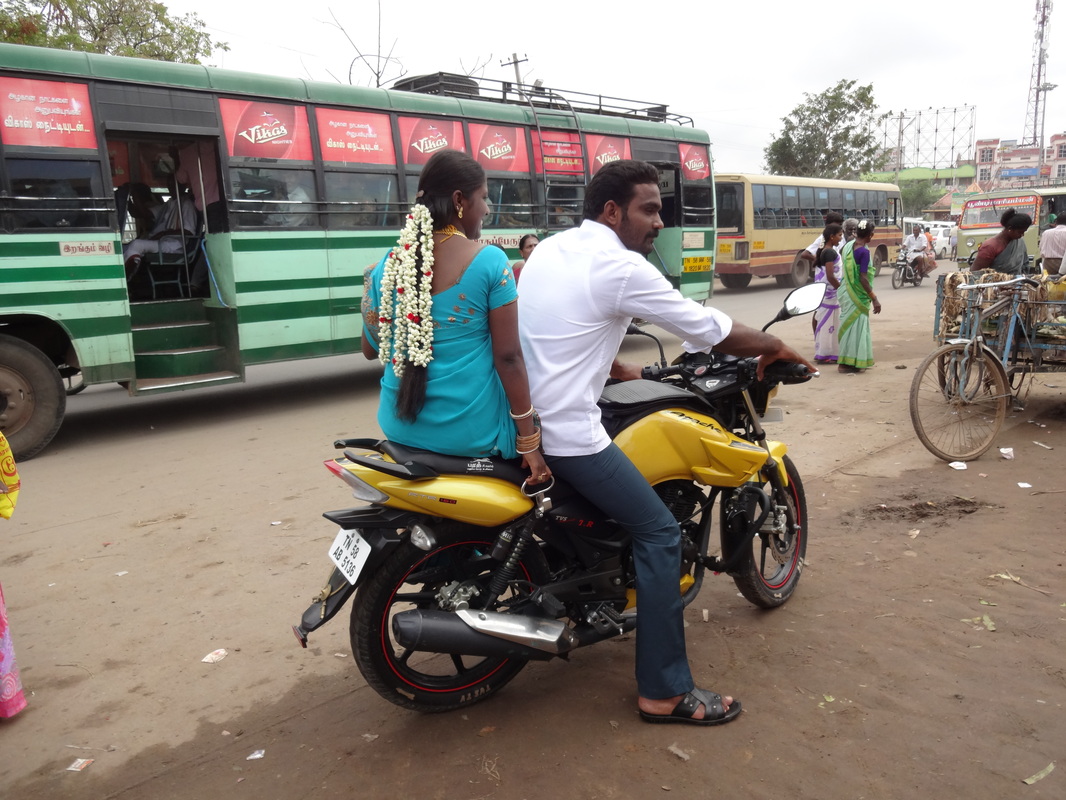
Newlyweds
|
Hi everyone! I am posting this from a nature retreat in Kerala, Cardomom country, where many spices are grown. I am about 10 days into the trip and decided to talk about flowers. They are everywhere here. They are sold street side for women to put in their hair. Indian women do not cut their hair and many decorate their braids daily with fresh flowers, usually jasmine but sometimes other flowers as well. We often get a garland of flowers when we check into a hotel. Fresh flowers are in ever hotel lobby, many restaurants and public places. Flowers are a very important part of temple ceremonies. Saffron is a holy color for Hindus and the marigold represents that roses provide a pleasing fragrance for the gods. We have attended many wedding, more about that later, and flowers play a huge part. Note the bride in the pic of newlyweds. By the way that scooter was her dowery!
When I think of India I will always think of the flowers.
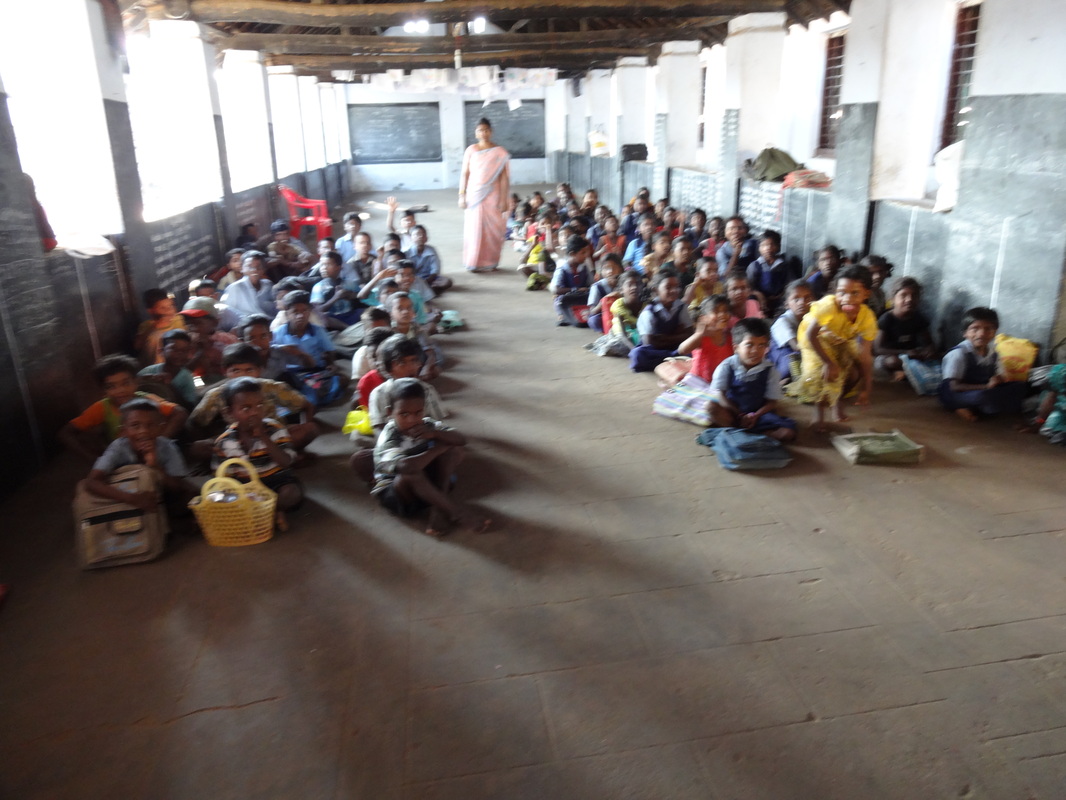
Elementary classroom
The company I travel with has a foundation to give back to the world we travel. A bit of money from each trip goes into it to support cultural or charitable causes in the countries we visit. In South India it is an orphanage outside of Tanjore that we stopped at a couple of days ago. There are twoo children there age 5-17. There are also about 60 elderly people who are poor and have nowhere to go. The kids go to public school. The orpanage gets a small amount of money from the government and the rest come from privates sources like ours | The project we are paying for is toilets! Our foundation is big on sanitation. I have visited privies we've built in many countries now and even used one. The school currently has 5 toilets and plans are to build another ten and the ten more as funds become available.
The kids here are not all true orphans. Many have been given up by families who couldn't feed them. More girls than boy as girls are seen as a liability. They require a dowery and will not be able to support parents in their old age.. |
The kids were lively. You could see the effects of prior malnutrition in their small sizes but the all seemed bright and OK now. We only saw the elementary kids as the high schoolers were in class in town. the elementary classes are held at the orphanage. I interacted with a group of 5 or 6 boy. as always my iphone was a great icebreaker. They like the pictures. They were very intrigued by the pics of pizzas my family had made. They said their favorite sport was cricket which they loved. I demonstrated American foot ball and how the quarterback throws the ball. Even though I know no Tamil and they had very little English we managed to communicate as true sports fans!



































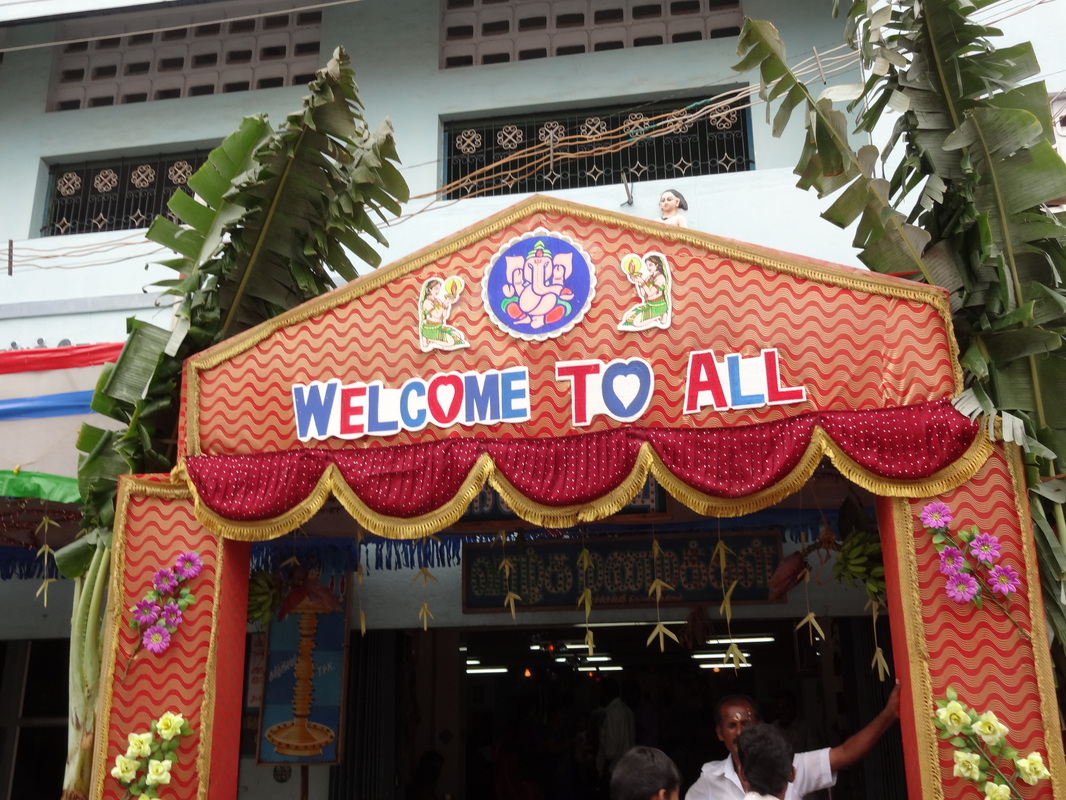









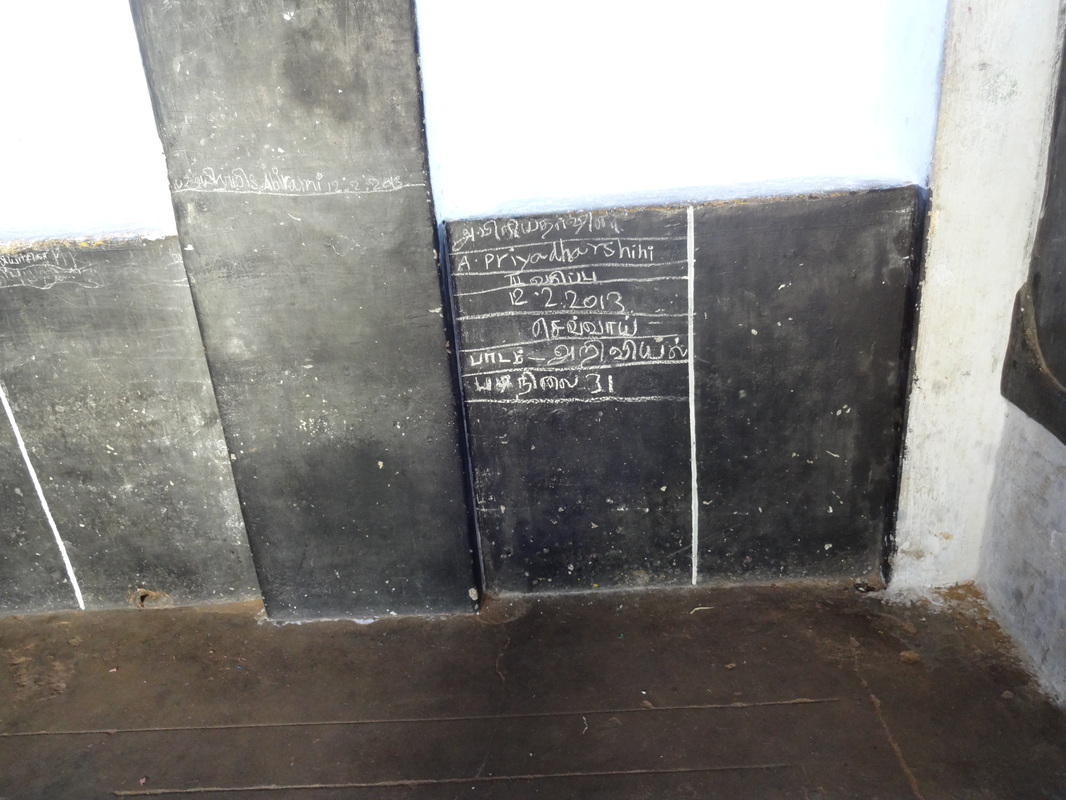
 RSS Feed
RSS Feed